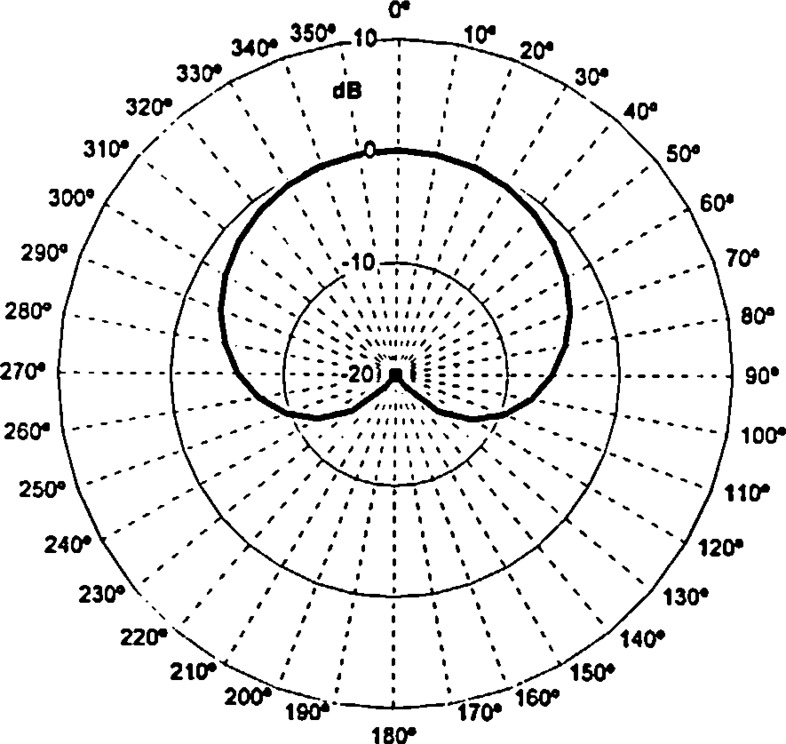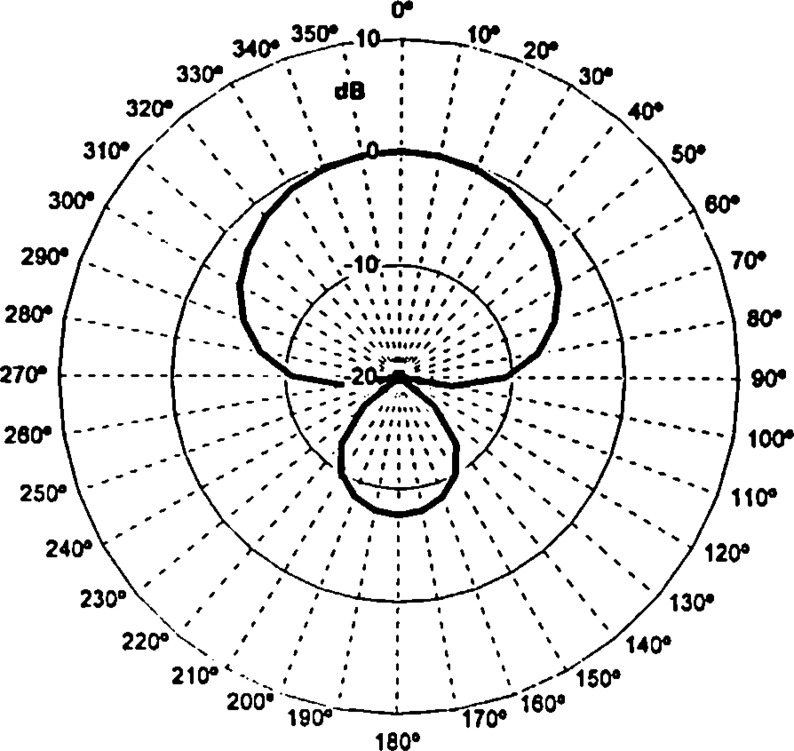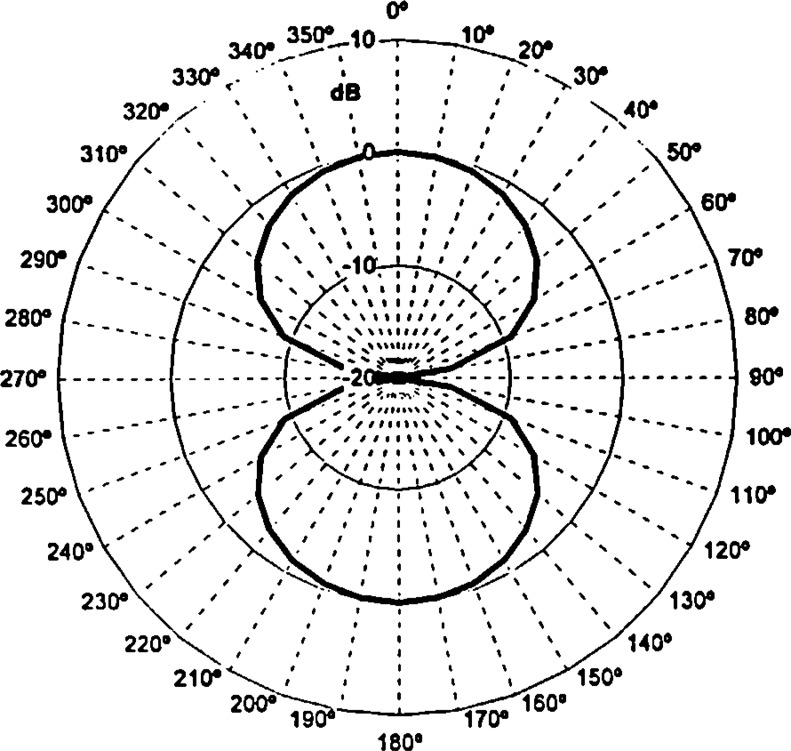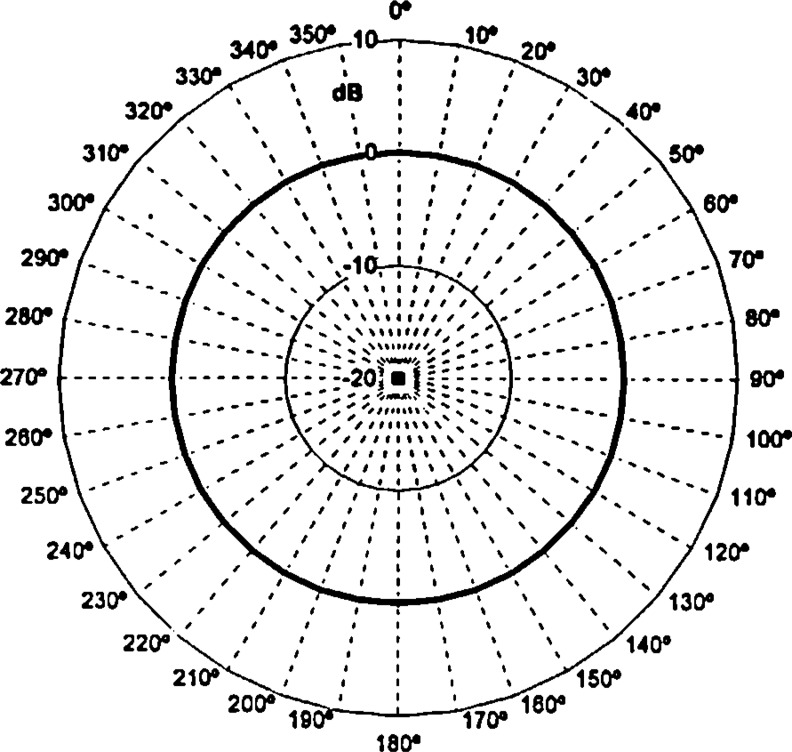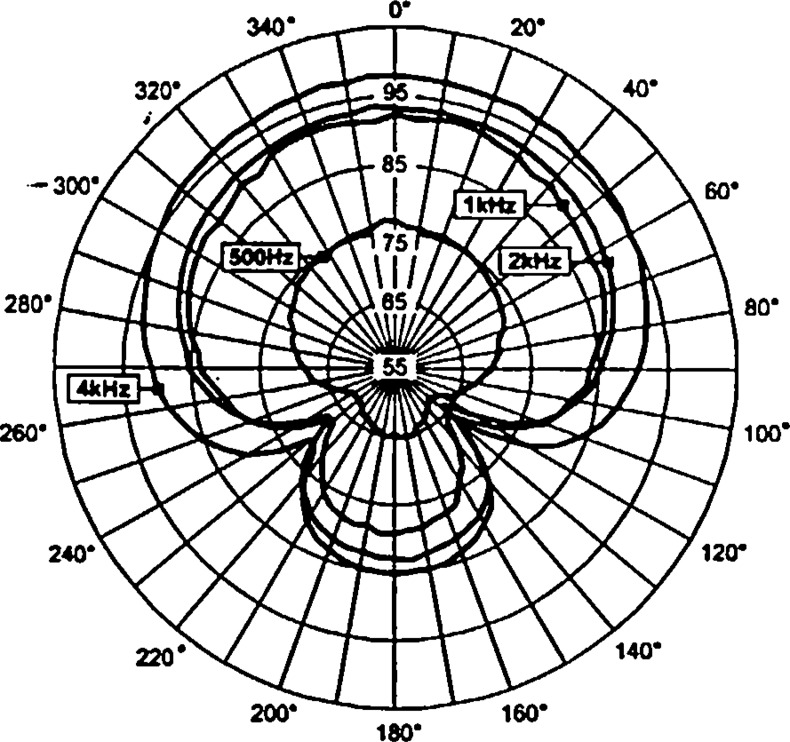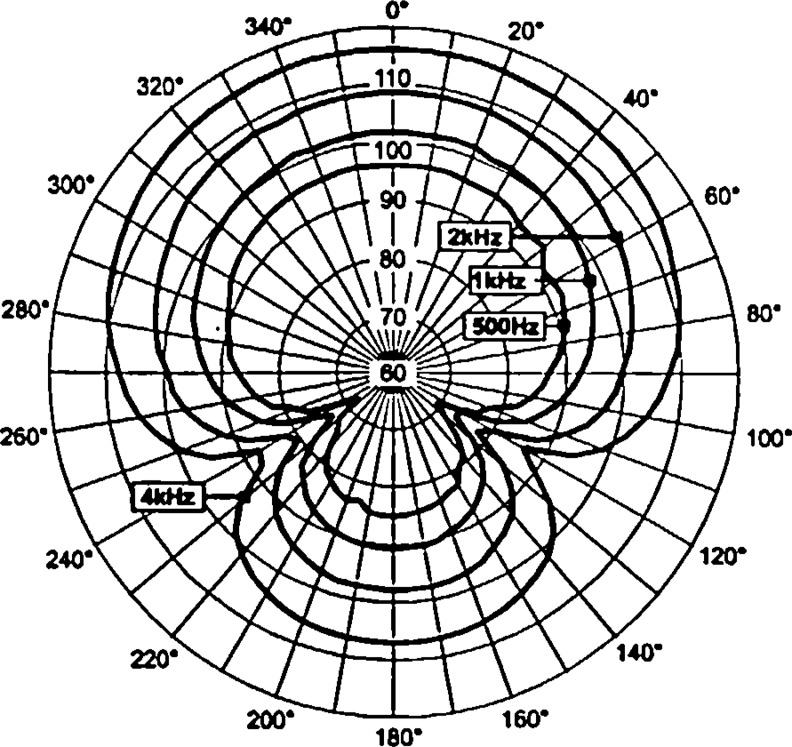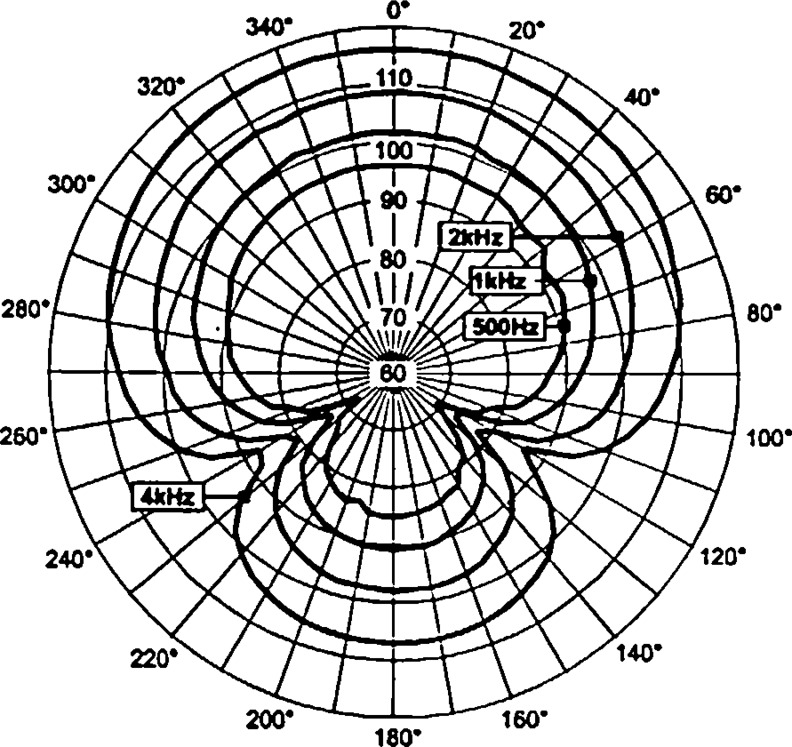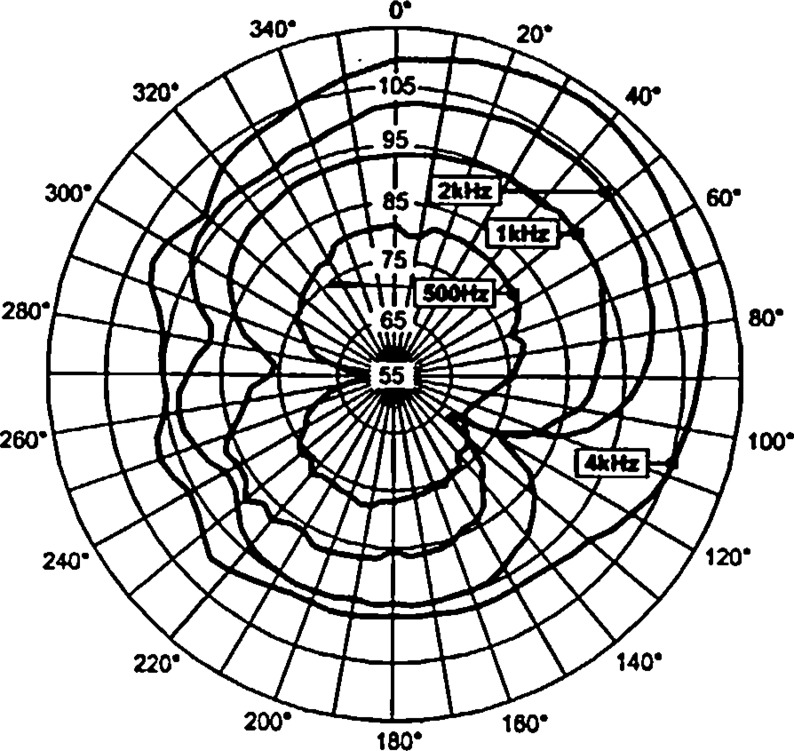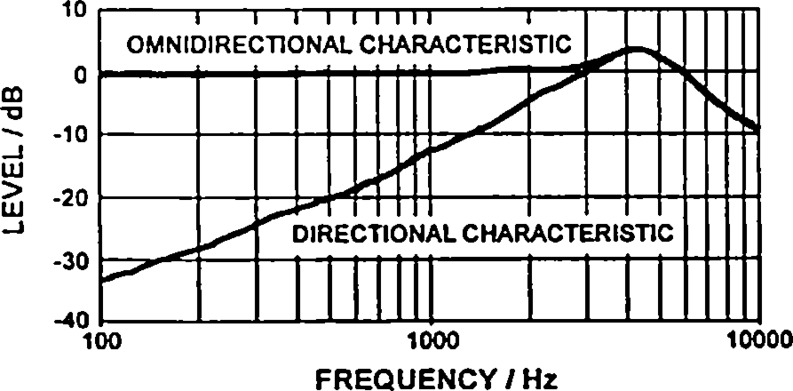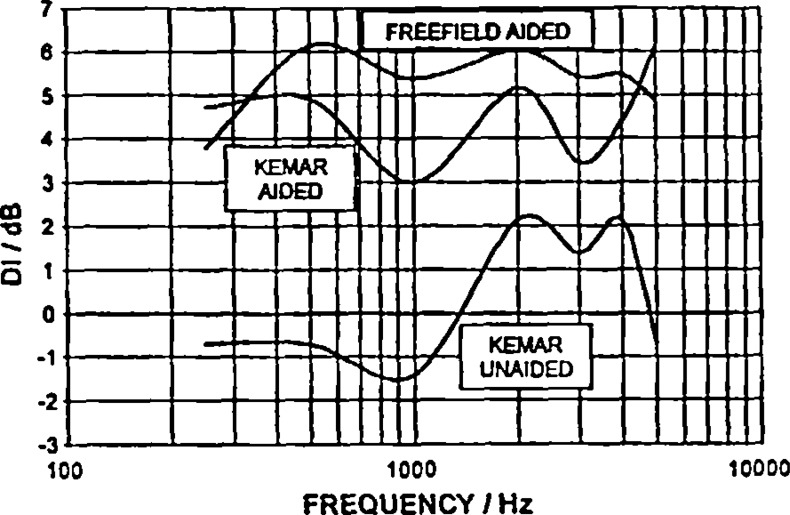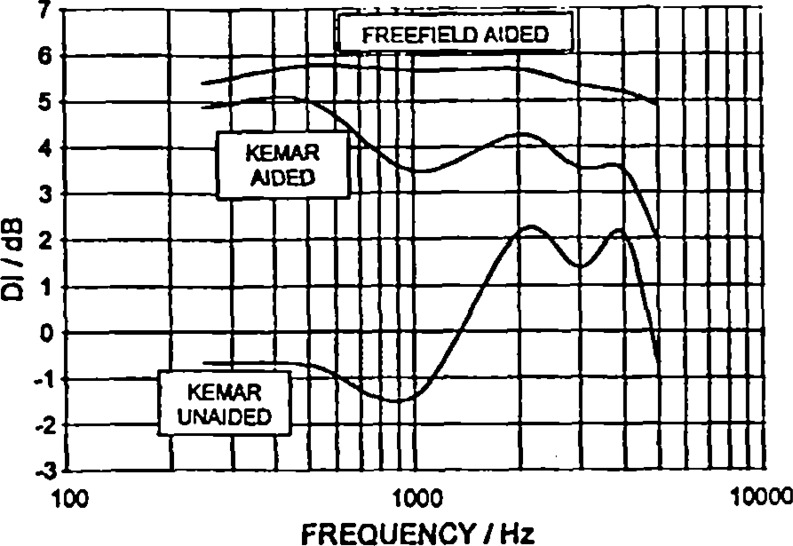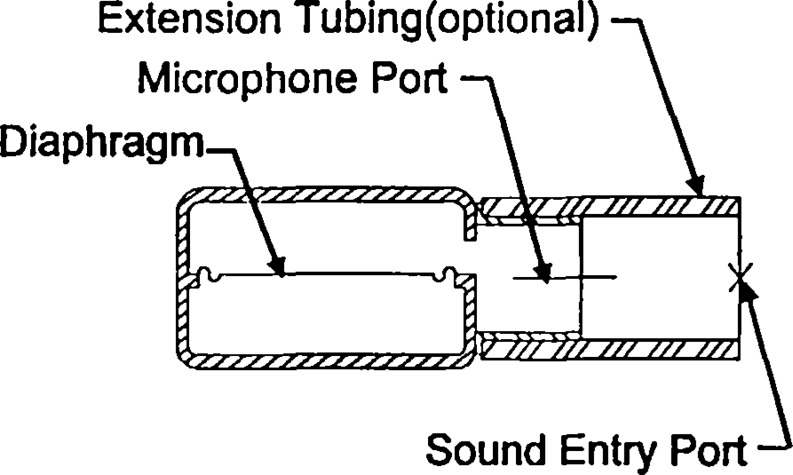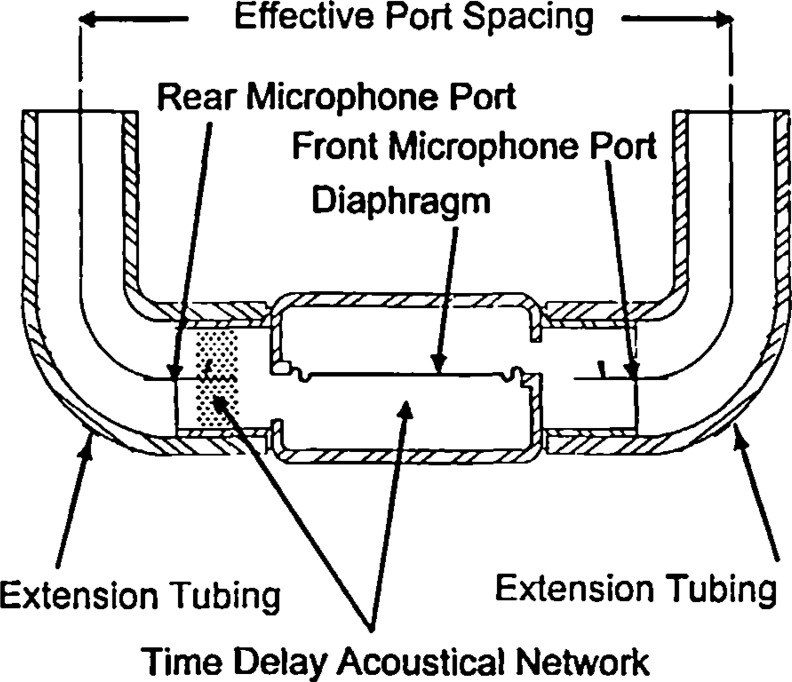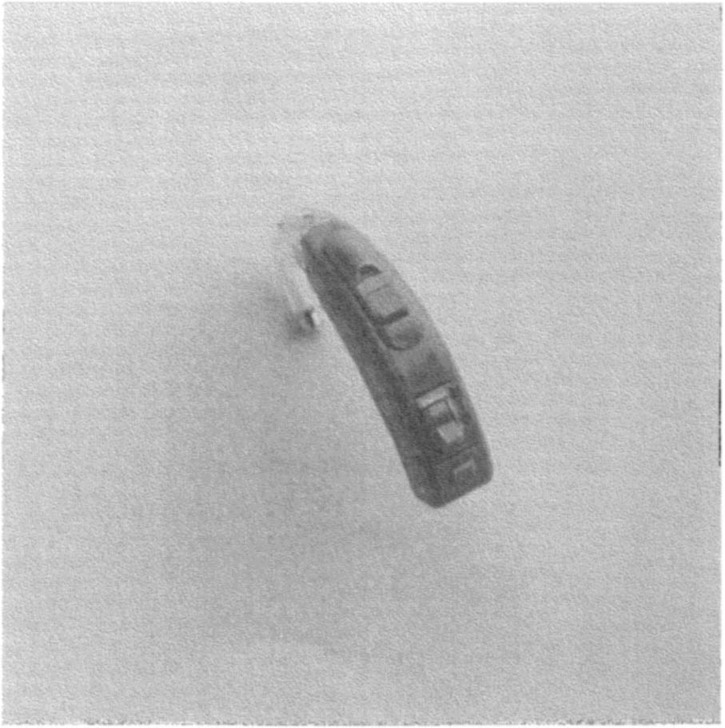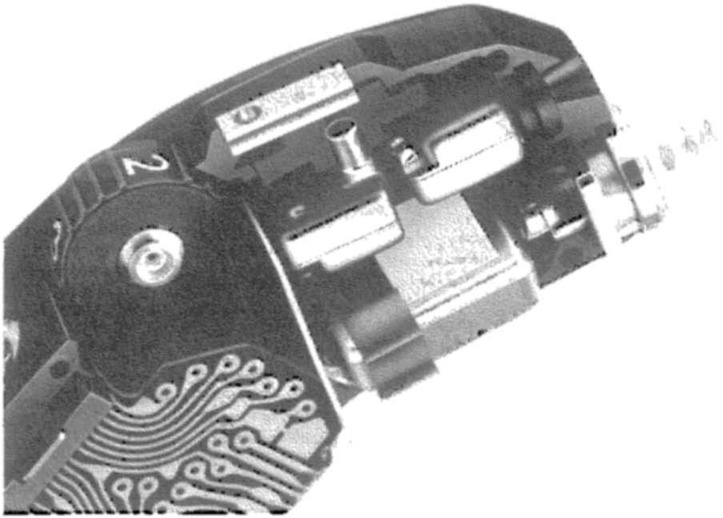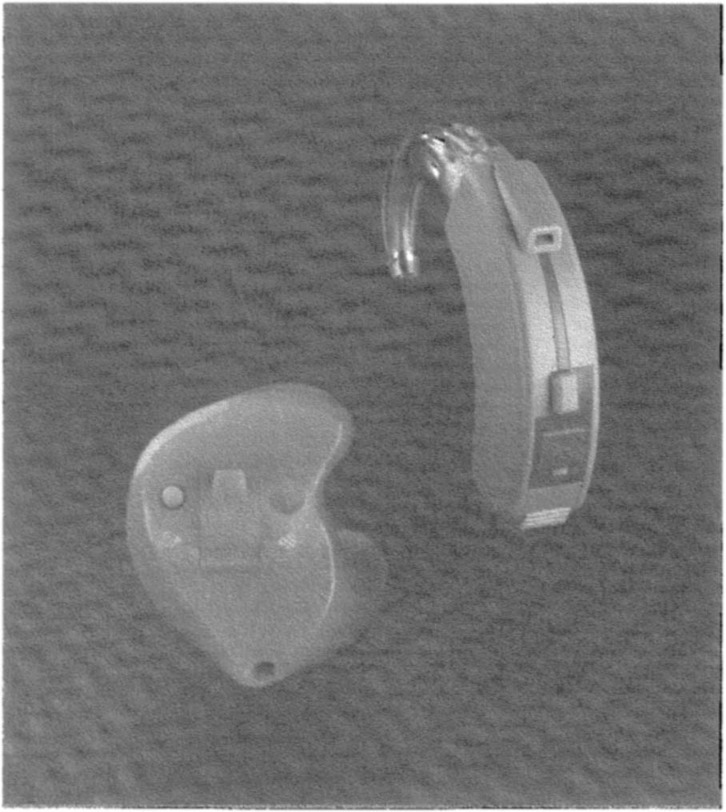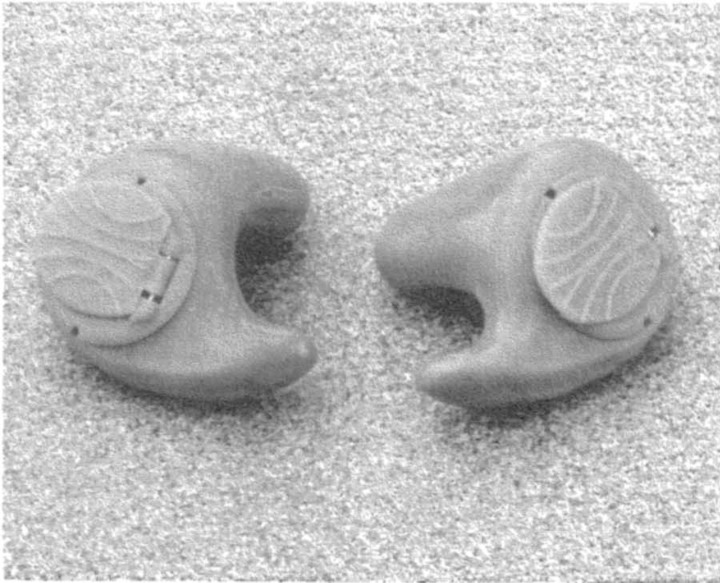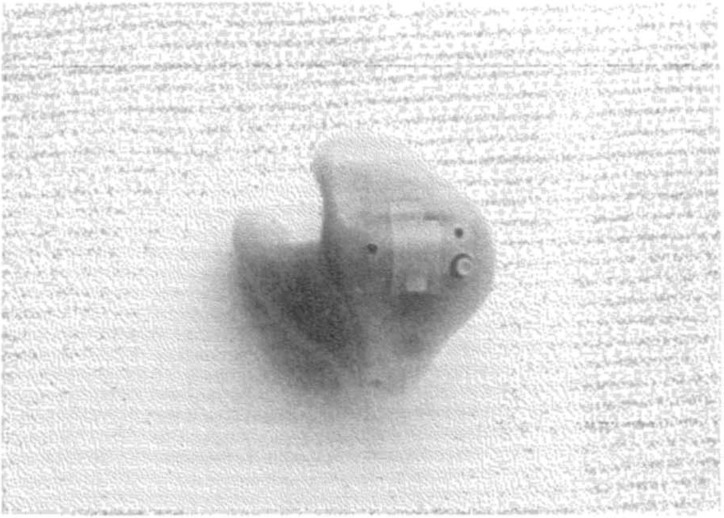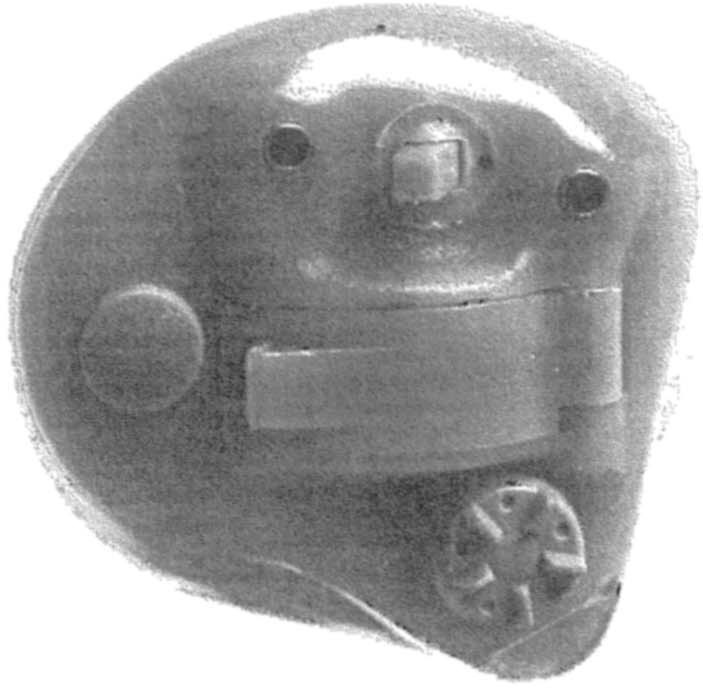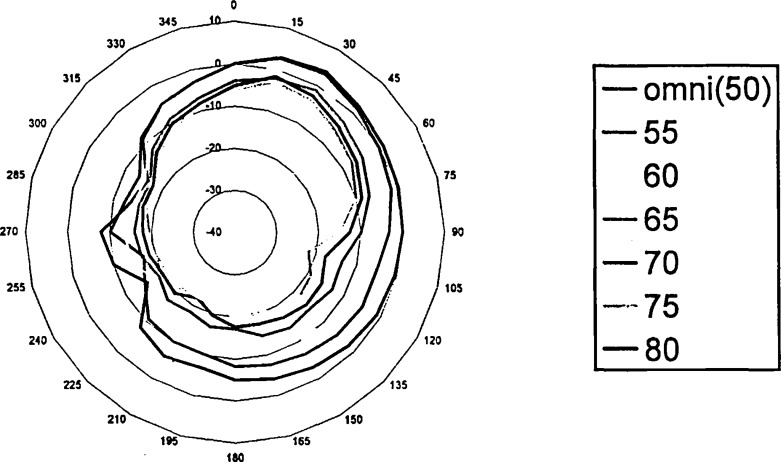INTRODUCTON
One of the major complaints of patients with hearing loss is increased difficulty in understanding speech in noise (Kochkin, 1993; 1994). The reader might have difficulty recalling any patient reporting hearing well in noise, but experienced great difficulty in quiet!
Research has shown that listeners with hearing loss require signal-to-noise ratio (SNR) improvements of 4 to 18 dB, depending upon the magnitude of hearing loss, in order to achieve word recognition scores equal to normal listeners when the signal is presented at 70 dB HL (Killion, 1997a; 1997b; 1997c; Roberts and Schulein, 1997). Furthermore, one of the major reasons patients report dissatisfaction with hearing aids is their inability to improve the understanding of speech in noise (Kochkin, 1994). Again, can the reader recall any patient returning hearing aids for credit because he/she felt its performance was fine in noisy situations, but unsatisfactory when communicating in quiet environments? If the only goal of hearing aid fittings aids was to improve the understanding of speech in quiet, then the number of dispensed hearing aids would explode. Unfortunately, the relatively poor performance of hearing aids in noisy environments is one of the major reasons consumers do not pursue amplification (Kochkin, 1994). Patients report that hearing aids often make sounds louder, but not clearer, and this problem becomes greater when listening in noise. Thus, a logical conclusion, from the viewpoint of our patients, is that hearing aids are not adequately addressing their needs.
Solving the issue of consumer dissatisfaction with hearing aids can be partially resolved by im proving our counseling skills. Some patients rationalize that because “x” dollars were spent for their hearing aids, then their performance in a noisy restaurant should be equal to their performance in the quiet of their living room. Patients need to bereminded that even the most technologically advanced hearing aids cannot restore normal hearing and that even normal listeners do not understand speech as well in noise as they do in quiet. Patients need to remind themselves that if normal listeners have increased difficulty understanding speech in the noise then why should they expect to perform the same as normal listeners under the same conditions.
In the opinion of the author, patients need to be counseled that their well-fitted hearing aids should accomplish at least four goals. First, understanding speech in a “quiet” environment will be significantly better (the patient decides what is significant) with their hearing aids than without their hearing aids. If this goal cannot be achieved then little hope remains that any other goals can be achieved. Second, understanding speech in a “noisy” environment will be significantly better with their hearing aids than without their hearing aids. If the major reason patients seek our services is to improve their understanding of speech in noise then why would they want to keep their hearing aids if the hearing aids do not adequately resolve this problem?
There is ample evidence within your own clinic that patients do in fact report better-aided performance in noise! For example, as part of my hearing aid fitting protocol I have the patient complete the Abbreviated Performance of Hearing Aid Benefit (APHAB) (Cox and Alexander, 1995) questionnaire. The author cannot remember any patient whose aided BN (aided listening in background noise) or RV (aided listening in a reverberant environment) problem scores were equal to or poorer than his unaided BN or RV problem scores. That is, the patients are reporting less problems with their hearing aids in noise or reverberation than they experience unaided. Whether the difference between the aided and unaided problem score (i.e., benefit score) is significant enough for the patient to keep the hearing aids is another question.
Third and most important, performance with the hearing aids in “noise” will probably not be as good as their performance in “quiet.” As emphasized earlier, patients need to be reminded that listeners with normal hearing do not hear as well in noise as they do in quiet. Therefore, there is no reason for the user to expect to do better than a person with normal hearing in the same listening situation. Having said this, sections of this issue will illustrate that technology is available, or may soon be available, so that aided performance in the restaurant may in fact be equal to or better than the performance of normal listeners! Finally, the user should find that input levels of “low” intensity (less than 50 dB SPL) should be judged as “soft”; input levels of “average” intensity (60 to 70 dB SPL) should be judged as “comfortable”; and input levels of “high” intensity (greater than 80 dB SPL) should be judged as “not uncomfortably loud.”
Recently the professional community has been excited about the recent introduction of digital signal processing (DSP) as a means to improve the understanding of speech in noise. Although DSP has the ability to significantly improve the flexibility of hearing aid fittings and diminish the deleterious effects of feedback, there has been no research demonstrating that DSP, alone, has significantly improved the understanding of speech in noise when compared to analog signal processing (Valente, Fabry, Potts and Sandlin, 1998; Ricketts and Dhar, 1999). However, there has been research to indicate that DSP, in combination with directional microphones, can provide significant improvement in the understanding of speech in noise relative to analog or DSP hearing aids using omnidirectional microphones (Valente, Sweetow, Potts and Bingea, 1999).
One area of hearing aid research that has consistently reported improved understanding of speech in noise is the directional microphone. This issue will provide a comprehensive overview of microphone technology and its impact on improving the understanding of speech in noise for listeners with hearing loss.
MEASURING MICROPHONE PERFORMANCE
It is important for the audiologist to be able to determine if one microphone design may better address the needs of a patient than another microphone design. For example, does one design provide greater attenuation of signais arriving directly from behind? Does the attenuation extend to a higher frequency range than another design? Is the attenuation greatest when signals arrive from the side? Which hearing aid style (i.e., BTE or ITE) provides greater attenuation in noise? Are differences in performance present when directional microphones are used with analog or DSP hearing aids? To help answer these questions, this section will address how microphone performance is measured.
Microphone performance can be measured in a number of ways, but the most common are polar sensitivity plots, front-to-back ratio (FBR), directivity index (DI) and the articulation index-directivity index (AI-DI).
Polar Sensitivity Plots (Directivity Pattern)
A polar sensitivity plot is a graphical “picture” of how the output of the hearing aid changes in response to a single frequency or several discrete frequences as the signal source arrives from different directions (i.e., azimuth). A polar plot is presented as a circle with concentric reference lines emanating from the center of the polar plot. The outer circle represents 0 dB attenuation and each inner circle typically represents 10 dB of attenuation. Usually, the top of the circle represents 0° azimuth, the right is 90°, the bottom is 180° and the left is 270°. Often, there are lines in 10° increments. Typically, this measure is performed in an anechoic Chamber with the hearing aid suspended in the free field. A polar plot can also be measured with the hearing aid coupled to the Knowles Electronics Manikin for Acoustic Research (KEMAR). The polar plots between these two measures with the same hearing aid will be quite different. When the hearing aid is coupled to KEMAR, the interaction between azimuth and the role played by the torso and head takes place. For example, when a hearing aid with an omnidirectional microphone is suspended in free field, the polar plot will reveal no attenuation as the signal source is rotated from 0° to 360°. When the same hearing aid is placed on the right car of KEMAR, however, the polar pattern will show greater sensitivity at ∼30° to 90° (e.g., greater amplification) due to head effects and less sensitivity (e.g., greater attenuation) at ∼270° due to the head shadow effect. When a hearing aid with a cardioid directional microphone is suspended in free field, the potar plot will reveal attenuation (i.e., null) at 180°. When the same hearing aid is placed on the right ear of KEMAR, however, the polar pattern will reveal greater sensitivity at ∼45° to 60° due to the head diffraction effects and less sensitivity at ∼210° due to the head shadow effect. Maximum sensitivity (i.e., less attenuation) will occur when the signal source is from in front of the user.
Polar plots are typically reported as being indicative of either omnidirectional or directional microphone designs. The directional plots are further divided into cardioid, hypercardioid, supercardioid or bidirectional designs. (Figures 2–3 and 8).
Figure 2.
Free-field polar sensitivity plot for a cardioid directional microphone (Figure reproduced with permission from ReSound Corporation).
Figure 3.
Free-field polar sensitivity plot for an hypercardioid directional microphone (Figure reproduced with permission from ReSound Corporation).
Figure 8.
Free-field polar sensitivity plot for a bidirectional directional microphone (Figure reproduced with permission from ReSound Corporation).
Omnidirectional: as discussed in the previous section, this plot typically shows a solid line hovering around the 0 dB line as the signal source rotates from 0° to 360°. This indicates that no degree of attenuation is provided at any azimuth. This is shown in Figure 1.
Cardioid: this plot typically shows a solid line hovering around the 0 dB line as the source is rotated between 0° to 150° and again from approximately 210° to 360°. However, there is significant attenuation (i.e., polar plot line is moved inward and crossing the −20 dB inner line showing at least 20 dB attenuation) of signals arriving from the rear). This relatively narrow “inversion” from behind is referred to as the “null.” The cardioid design attenuates signals maximally when they arrive directly from the rear (i.e., 180°) and appears to resemble a “heart” or “apple.” Figure 2 illustrates a cardioid polar plot for a dual-microphone DSP BTE.
-
Hypercardioid: this plot typically shows a solid line hovering around the 0 dB line as the source is rotated between 0° to 100° and again from approximately 260° to 360° (see Figure 3). However, there is significant attenuation when the signal arrives from between 130° to 230°. This design has two nulls (110° and 250°) and a “lobe” at 180°. The lobe illustrates that this design provides some amplification when signals arrive from behind when compared to the response provided by a cardioid design. Figures 4 and 5 illustrate polar plots at 500 to 4000 Hz for a hypercardioid dual-microphone DSP ITE (Figure 4) and DSP BTE (Figure 5) measured in free field. Notice that for both styles, attenuation is greatest at 500 Hz and least at 4000 Hz. This is especially true for the ITE (Figure 4). Also, notice that the amount of attenuation for the ITE (Figure 4) is very similar at 1000 to 4000 Hz (i.e., the lines are close together), but equally separated for the BTE (Figure 5). Finally, notice that the attenuation at 130° and 230° provided by the ITE is greater than provided by the BTE.
Figures 6 (ITE) and 7 (BTE) illustrate the polar sensitivity for the same hearing aids, but the measurement performed on KEMAR. Notice how the attenuation seen at 130° and 230° when the aids were measured in free field has virtually disappeared. Also notice that for the BTE (Figure 7), the null appears at ∼270° for the lower frequencies and virtually disappears at the higher frequencies. This illustrates why directional polar plots should be reported on KEMAR in order to provide a more realistic picture of the performance of the hearing aids when worn on a patient.
Supercardioid: this plot typically shows a solid line hovering around the 0 dB line as the source is rotated between 0° to 120° and again from approximately 240° to 360°. However, there is significant attenuation when the signal arrives from between approximately 130° to 230°. This design also has two nulls and a “lobe” at 180°. However, the lobe in this design is considerably shallower and narrower when compared to the lobe of the hypercardioid design. Also, because of the narrow and shallower lobe for signals arriving from directly behind, this design should provide greater improvement in noise than either the cardioid or hypercardioid desisns.
Bidirectional: this plot typically shows a solid line hovering around the 0 dB line as the signal source is rotated between 0° to 360°. However, nulls are present when the signal arrives from 90° and 270° (see Figure 8). This design is created by not incorporating a delay between the front and rear openings. One example where this design might be helpful would be for a taxi driver who needs to hear conversations from the rear, but requires signals from the sides (windows) to be attenuated. Another potentially useful situation is when a husband and wife are communicating across a kitchen table and. their in-laws are to the left and right at the ends of the table!
Figure 1.
Free-field polar sensitivity plot for an omnidirectional microphone (Figure reproduced with permission from ReSound Corporation).
Figure 4.
Polar sensitivity plot at 500, 1000, 2000 and 4000 Hz of a dual-microphonc ITE measured in a free-field (Figure reproduced with permission from Siemens Hearing Instruments, Inc.).
Figure 5.
Polar sensitivity plot at 500, 1000, 2000 and 4000 Hz of a dual-microphone BTE measured in a free-field (Figure reproduced with permission from Siemens Hearing Instruments, Inc.).
Figure 6.
Polar sensitivity plot at 500, 1000, 2000 and 4000 Hz of a dual-microphone ITE measured on the right ear of KEMAR (Figure reproduced with permission from Siemens Hearing Instruments, Inc.).
Figure 7.
Polar sensitivity plot at 500, 1000, 2000 and 4000 Hz of a dual-microphone BTE measured on the right ear of KEMAR (Figure reproduced with permission from Siemens Hearing Instruments, Inc.).
Front-To-Back Ratio (FBR)
The FBR is reported as the frequency response of the microphone with the signal presented from the front and a second frequency response illustrating performance when the signal is presented from the rear. The difference between these two frequency responses is the FBR. If it is an omnidirectional microphone, the two frequency response curves will essentially superimpose upon each other showing that signals from the rear are amplified in a manner similar to when the signal arrives from the front. In this situation, the FBR is 0 dB. In the case of a directional microphone, the frequency response for signals arriving from the rear will separate from the frequency response of signals presented from the front (Figure 9). The greater the separation, the greater the FBR. Clearly, the FBR would not be an accurate representation of the performance of hypercardioid, supercardioid and bidirectional microphones because of their reduced attenuation of the signal from behind. In conventional directional microphones (single microphone with a front and rear port), the FBR is greatest in the low frequency région and the separation decreases as frequency increases. In dual microphones, the magnitude of the separation between the front and rear frequency response is greater than a conventional directional microphone and the frequency range for where the separation occurs is wider (i.e., the separation between front and rear frequency response occurs beyond 2000 Hz). Thus, as will be shown later, the dispenser may expect greater directional performance (i.e., greater improved SNR) from hearing aids using dual microphones than from hearing aids using conventional first-order (i.e., cardioid) directional microphones. Figure 9 illustrates the relative frequency-gain response of a dual-microphone hearing aid in its omnidirectional (upper curve) and dual-microphone (lower curve) positions.
Figure 9.
Relative frequcncy-gain response of omnidirectional and dual-microphone positions with a dual-microphone hearing aid. Notice the significant decrease in amplification in the low frequencies when the dual microphone is activated (Figure reproduced with permission from Siemens Hearing Instruments, Inc.).
Directivity Index (DI)
The DI is single number (in dB) and represents the ratio of the microphone output for signals from the front (0°) to sounds originating from all directions (diffuse). The DI correlates closely with the predicted improvement in SNR provided by the microphone. For example, the DI of a omnidirectional microphone can be 0 or 1.0 dB (or even less than 0 dB), whereas the DI for a well designed directional microphone will be between 4 to 6 dB. As will be reported later, the DI for some multiplearray microphone designs can be 12 to 14 dB! The DI provides a good estimate of how helpful the directional microphone will be in difficult listening situations (i.e., listener surrounded by sound and trying to understand the talker directly ahead). The higher the DI, the greater the case of communication in difficult listening situations. When looking at the DI for a directional microphone, it is important to observe the DI for the open ear and omnidirectional microphone. For example, the open ear DI can be negative in the lower frequencies and positive above 2000 Hz (pinna effects). It is not uncommon for the DI for the open ear and omnidirectional microphone to be similar (∼−1.5 dB). For example, for an omnidirectional BTE, pinna effects for the high frequency region do not exist and it is not uncommon to see a negative DI. Figures 10 and 11 illustrate the DI for a dual-microphone ITE (Figure 10) and BTE (Figure 11) measured in free-field (upper curve in Figures 10 and 11) and on KEMAR (middle curve in Figures 10 and 11). The lower curve in Figures 10 and 11 represents the unaided response of KEMAR. Notice how the DI is slightly greater for the ITE than the BTE (due to head effects). Also, notice as mentioned earlier, that for each hearing aid design, the DI decreases when the measure is performed on KEMAR due to head and torso effects decreasing the low (torso) and high (head) frequency response of the hearing aid.
Figure 10.
Directivity Index (DI) of a dual-microphone ITE measured in free-field (upper curve), on KEMAR (middle curve) and on KEMAR unaided (lower curve) (Figure reproduced with permission from Siemens Hearing Instruments, Inc.).
Figure 11.
Directivity Index (DI) of a dual-microphone BTE measured in free-field (upper curve), on KEMAR (middle curve) and on KEMAR unaided (lower curve) (Figure reproduced with permission from Siemens Hearing Instruments, Inc.).
Articulation Index-Weighted Directivity Index (AI-DI)
The Articulation Index (AI) (ANSI-1969) provides a measure of the percentage of speech energy that is audible (i.e., above threshold or above the level of background noise). The AI provides different weights to the contribution of each individual frequency band to the overall intelligibility of speech. For example, the AI applies a weight of .0010 for 250 Hz and .0024 at 1000 Hz. This increases to .0038 at 2000 Hz and .0034 at 3150 Hz. That is to say that the speech energy at 2000 to 3000 Hz contributes more to overall speech intelligibility than the speech energy at 250 to 1000 Hz. In the AI-DI procedure, the DI at each frequency is calculated by multiplying the AI weight and then performing a root mean square (RMS) sum of the resulting products to arrive at one number. Thus, a directional microphone whose DI extends to the high frequency region will have a higher AI-DI than a directional microphone whose DI does not extend beyond 2000 Hz. Theoretically, the directional microphone with a higher AI-DI will provide significantly better performance in noise than the directional microphone with the lower AI-DI. For example, the AI-DI of the D-Mic™ (to be presented later) measured on KEMAR is 4.5 dB whereas the AI-DI for a omnidirectional microphone on a ITE is 0.3 dB (Roberts and Schulein, 1997).
TYPES OF MICROPHONES
Omnidirectional
An omnidirectional microphone has one sound inlet (Figure 12) and signals are equally processed regardless of azimuth. Thus, signals arriving from the 0° are handled equally as efficiently as those arising from any other direction. As will become apparent in the remainder of this manuscript, this microphone design, although the most widely used, has been repeatedly shown to provide the poorest performance in noise.
Figure 12.
Schematic drawing of a omnidirectional microphone (Figure reproduced with permission from Knowles Electronics).
Conventional Directional
Directional microphones have been available since 1972 (Arentsschild and Frober, 1972), but Mueller (1981) reported that only 20% of dispensed BTEs contained directional microphones. This microphone has two sound inlets (front and back) leading to separate cavities, divided by a diaphragm. The diaphragm senses differences in air pressure between the two cavities and transduces these differences to provide an electrical output signal. To prevent sound from the rear inlet activating the diaphragm before being activated by signals from the front inlet, an acoustical time delay network is placed in the rear inlet to assure that the sound waves from both inlets reach the diaphragm at the same time (Figure 13). Equivalent sound pressure on opposite sides of the diaphragm simultaneously results in sound cancellation because the diaphragm can not move. Therefore, engineers can design different directional microphone patterns by manipulating the magnitude of the delay for the sound arriving from the rear port. In the past, horse or camel hair was used to create the delay. Currently, fine metal mesh acoustical dampers are used to achieve accurate and reliable delays (Preves, 1997). The effectiveness of the time delay network is primarily dependent upon:
Figure 13.
Schematic drawing of a directional microphone (Figure reproduced with permission from Knowles Electronics).
the magnitude of the time delay (in micro-seconds) in the rear port,
distance (in mm) between the front and rear sound inlets (e.g., port spacing),
dimensions of the extension tube from each sound inlet, and
location of the microphone ports on the hearing aid case.
According to Skinner (1988), the typical time delay incorporated in directional microphones is 58 microseconds. This corresponds to a port spacing of approximately 19.7 mm (i.e., delay × velocity of sound in air or 58 × 344 mm/sec). However, Bachler and Vonlanthen (1995) report that the time delay can be between 25 to 43 microseconds. According to Nielsen (1973), for the delay network to be most effective, it has to be equal to the length of the microphone case. For example, if the length between the front and rear port is 13 mm (1/2″) then the delay must be 40 microseconds because that is the time it will take a sound wave to travel 13 mm. The velocity of sound is 344 m/ sec (or 1 mm in 3 microseconds). Thus, it will take sound nearly 40 microseconds to travel the 13 mm (3 × 13) from the rear to the front inlets and vice versa. If the distance between the front and rear inlets is 15 mm, then the time delay would need to be 45 microseconds. If this can be accomplished, then the familiar cardioid pattern will appear. If the microphone has a rear port, but no time delay network, the polar pattern is bidirectional. Bachler and Vonlanthen (1995) revealed it is possible to convert a cardioid design to a hypercardioid design by reducing the time delay from 43.2 microseconds to 24.9 microseconds while keeping the port spacing constant at 14 mm. In addition, an engineer may convert a hypercardioid design to a cardioid design by decreasing the port spacing (14.4 mm to 8.3 mm) while keeping the time delay constant (24.9 microseconds). Due to the continued miniaturization of microphones, hearing aids can now be produced with port spacing as small as 4 mm. One can see that as inlet spacing is decreased, the acoustic delay in the rear inlet needs to be decreased to maintain the same polar pattern. As inlet spacing is increased, then the delay needs to be increased to maintain the same polar pattern.
Another consideration is varying the port spacing via the length of the extension tubing from the inlets to the hearing aid case, but leaving the delay constant. Buerkli-Halevy (1986) illustrated that by increasing the inlet spacing from 8 mm to 14 mm, but leaving the time delay constant at 24.9 microseconds, the directional pattern resulted in greater attenuation from 135° and 225°, but poorer attenuation from 180°.
Finally, directional microphones usually provide less low frequency gain than omnidirectional microphones due to greater similarity in the amplitude and phase at the two microphone ports for the low frequency waveform.
Dual Microphone
In this design, two perfectly matched omnidirectional microphones are placed with the housing of BTE or ITE hearing aids. Figures 14, 15 and 19 illustrate commercially available dual-microphone BTEs, while Figures 16, 17, 18 and 19 illustrate commercially available dual-microphone ITEs. In a BTE, size constraints allow the maximum distance between the two microphone ports to be approximately 15 mm, while the distance is reduced to 4 mm to 10 mm for an ITE.
Figure 14.
Photo of a dual-microphone BTE (Photo reproduced with permission from Siemens Hearing Instruments, Inc.).
Figure 15.
Photo illustrating the placement of two omnidirectional microphones in a BTE case (Photo reproduced with permission from Phonak, Inc.).
Figure 19.
Photo of a dual-microphone ITE and BTE (Photo reproduced with permission from ReSound Corporation).
Figure 16.
Photo of a dual-microphone ITE (Photo reproduced with permission from Phonak, Inc.).
Figure 17.
Photo of a dual-microphone ITE (Photo reproduced with permission from Siemens Hearing Instruments, Inc.).
Figure 18.
Photo of a dual-microphone ITE (Photo reproduced with permission from Micro-Tech Hearing Instruments, Inc.).
In a dual-microphone BTE fitting, it is important that the tubing be short enough so that the two microphone ports are horizontal (Mueller and Wesselkamp, 1999) above the ear. In an ITE, it is important for the dispenser to mark the impression with a horizontal line indicating the proper placement of the two microphone ports for the individual ear. If the horizontal alignment is off by 20° or more, it can reduce the DI by 0.5 dB (Mueller and Wesselkamp, 1999). In either type of fitting, the presence of venting can diminish the performance of dual microphones. For example, a closed vent fitting provided a DI of 4.2 dB in a dual-microphone ITE. This DI was reduced to 2.9, 1.9 and 1.6 dB for 1, 2 and 3 mm vents, respectively (Mueller and Wesselkamp, 1999). However, the reader clearly should not provide minimal venting if the user has normal or near normal hearing in the lower frequencies to improve the DI. Doing this will probably result in the patient reporting that his own voice sounds like it is at the bottom of a barrel (i.e., occlusion effect).
Improved performance of dual microphones is provided by subtracting the output of the rear microphone from the output of the front microphone and adding an electronic time delay to the output of the rear microphone. The magnitude of the delay to the signal from the rear microphone is determined by the distance between the two microphones. In some hearing aids, analog to digital (A/D) converters are added so that the output from each microphone is sampled and digitized. Then the rear microphone signal is delayed and subtracted from the front signal digitally to provide more precision in controlling the frequency response of the two microphones (Edwards, Hou, Struck and Dharan, 1998). Subtracting the two microphones digitally, instead of electronically before being passed to the A/D converter is used to assure that the two microphones are always perfectly matched. Edwards et al (1998) reported that as much as a 1 to 2 dB mismatch in phase and amplitude between the two microphones can convert a hypercardioid response to a near omnidirecional response. Edwards et al(1998) go on to report that the effect of mismatched microphones becomes greater as the distance between the two microphones decreases (i.e., greater problem created by mismatched microphones in an ITE).
Finally, as in the conventional directional microphone, in a dual microphone there is usually less low frequency gain for signal arriving from behind due to the greater similarity in the amplitude and phase at the two microphone ports for the low frequency wave-form. By increasing the overall gain and reducing the high frequency gain, it is possible to “cqualize” the dual-microphone response so that the response is equal to the response for signals arriving at the front. By equalizing the dual-microphone response, the amplified signal sound louder (equal loudness between the omnidirectional and dual-microphone positions) and there is less need for the user to increase the overall gain when switching to the dual-microphone position.
D-Mic™
One of the more recent advances in microphone technology for ITEs (1/2 or full-shell with a port spacing of 4 mm) is the introduction of the D-Mic™ by Etymotic Research in late 1997. The D-Mic™ is a dual microphone design (one omnidirectional and one hypercardioid directional microphone are within the capsule) with three port openings that are glued into a 6.34 mm opening of an ITE face-plate. Figure 20 illustrates three views of the D-Mic™. The right panel illustrates the D-Mic™ capsule with the faceplatc removed. Here it is easy to see the single center opening for the omnidirectional microphone and the two adjacent openings for the hypercardioid (also called 2nd order) directional microphone.
Figure 20.

Photo illustrating three angles of viewing the D-Mic™ capsule. The illustration at the right depicts the capsule with the faceplate removed, showing the one upper opening for the omnidirectional microphone and the two lower openings for the hypercardioid directional microphone (Photo rcproduced with permission from Etymotic Research).
The D-Mic™ can be configured two ways. First, the D-Mic™ can be ordered with a double-throw switch allowing the user to switch between omnidirectional (rear position) and either directional flat (i.e., equalized) or low-cut (i.e., non-equalized) (forward position). When in the omnidirectional mode, the AI-DI is 0.3 dB and only one of the three ports is active. When switched to the directional flat response, the AI-DI varies from 3.3 dB at 1000 Hz to 6.3 dB at 4000 Hz, and the two horizontal ports are activated and the remaining port is deactivated. Second, the hearing aid can also be ordered with a triple-throw switch that allows the user access to all three responses. In addition, the dispenser can order a potentiometer to adjust the D-Mic™ low-cut response even further. Reportedly, the directional flat response (equalized) provides a more natural sound quality than the directional low-cut response (non-equalized). However, Preves, Sammeth and Wynne (1997) reported no significant differences in performance between equalized and non-equalized frequency responses.
Multiple-Microphone Arrays
These experimental hearing aids use two to seventeen omnidirectional or directional microphones. As will be reported later, research has shown that additional benefit is not achieved when the number of microphones exceeds five. These devices are sometimes referred to as “beamformers” because of their ability to “beam-onto” the wanted signal and “beam-out” the unwanted signals. Some beamformers have a fixed null(s), while other beamformers sense the direction of the noise and adaptively move the beam to reduce the effects of the noise by placing a null at the direction of the noise. In a fixed array, the processing is time invariant. Data-dependent weights are applied to the microphone signals to create maximum amplification for signals arriving in the front (target), while reducing amplification for signals arriving off-axis (away from the target). In an adaptive design, the weights are continually adjusted to achieve optimum performance based upon some criterion or algorithm (Stadler and Rabinowitz, 1993). This is accomplished by using an adaptive filter to “steer” the array. In general, beamformers can yield up to “N − 1” nulls, where N is the number of microphones. Thus, a beamformer with three microphones will have two nulls.
One example of a fixed beamformer would be two omnidirectional microphones with an electronic delay built into the hearing aid between the front and rear microphone to obtain a cardioid response. Another example would be using four to five omnidirectional microphones to achieve a response with greater attenuation from the sides and rear (i.e., hyper or supercardioid response). Still another example would be a hearing aid with two omnidirectional microphones where the user, by pressing a button on the hearing aid, can obtain cardioid, hypercardioid or bidirectional responses. In this case, different electronic delays are introduced to the hearing aid via the programming software to achieve the desired directional response. The consistent factor with the scenarios described here is that the microphone design applies amplification for signals arriving from one direction and attenuation for signals arriving from other directions and the design is fixed into what it can achieve.
An example of an adaptive beamformer is a manufacturer who recently introduced a hearing aid which operates in a omnidirectional fashion when the input signal is 50 dB SPL and gradually converts to “full” directionality when the input signal is greater than 75 dB SPL. Figure 21 illustrates a polar plot at 2000 Hz for this D-Mic™ hearing aid measured on the right ear of KEMAR for input levels of 50 to 80 dB SPL in 5 dB increments. Notice how the attenuation provided by this hearing aid design at ∼270° increases as the input signal increases.
Figure 21.
Polar sensitivity plot at 2000 Hz of a D-Mic™ ITE measured on the right ear of KEMAR where the microphone response is omnidirectional at low input levels and becomes more directional as the input level increases (Figure reproduced with permission from Audio ‘D’).
Several experimental multiple-microphone arrays have been designed as broadside or end-flre arrays. In a broadside array, five omnidirectional microphones are equally spaced along the forehead using an eyeglass or headband. In some broadside arrays, the output from each microphone is summed and then forwarded to an analog-to-digital (A/D) converter for signal processing. This is why broadside designs are sometimes referred to as “summing” arrays. In an end-fire array, five omnidirectional microphones are equally spaced along the side of the head. In the end-fire array, sound from 0° impinges first on the most forward microphone and last on the most rear microphone. When sound arrives from behind, the process is reversed. Thus, in the end-fire design increasingly smaller amounts of delay, going from the front to the rear microphone, is incorporated before the output from the five microphones is summed. This is why endfire arrays are sometimes referred to as “delay + sum” arrays.
A commercial product (the “Array”) has recently been introduced by one hearing aid manufacturer that contains six omnidirectional microphones (Figure 22). This device is worn around the neck and placed under the user's clothing. The output from the Array is transmitted inductively (wireless) to the telecoil of any hearing aid. If the user does not have hearing aids, or hearing aids with a telecoil, completely-in-the-canal (CIC) hearing aids with a telecoil can be ordered for the patient. The beamwidth of the Array is ± 30°, but this can be fine-tuned by the user to achieve better performance in different listening environments. In addition, the frequency response of the Array is divided into twelve independent channels between 200 to 6100 Hz and each channel can reportedly be independently programmed by the dispenser. Results of a pilot study (signal at 0°; noise via eight loudspeakers in the four corners of the ceiling and floor) on nine subjects revealed an average SNR improvement of 10.8 dB when the Array was coupled to the subject's hearing aid relative to the performance with the subject using the hearing aid alone. In addition, the mean word recognition score in noise with the Array was 72.6%, while the mean word recognition score was 22.3% for the hearing aid alone condition. Of course, it has yet to be decided if the benefit provided by the Array will be sufficient to overcome the obvious cosmetic disadvantage created by the Array design.
Figure 22.
Photo of “The Array” (Photo reproduced with permission from Starkey Laboratories).
In another experimental version of beamforming technology, BTE hearing aids were placed over the ear. The output from each hearing aid was wired to a DSP processor. The processor analyzed differences in time, phase and intensity between the output of the two hearing aids. If differences were not present, then it was assumed that the signal arrived from the front and the signal would obtain full amplification. For “off-axis” signals, interaural time differences can be detected because the signal will arrive sooner at the ear nearer to the sound source and delayed to the opposite ear. Also, interaural intensity differences can be detected because the signal will be more intense at the near ear and less intense at the opposite ear. These differences will increase as the frequency of the stimulating signal increases. Thus, the processor can detect the “off-axis” differences, attenuate the signal for “off-axis” sounds and increase the attenuation as the differences in time, intensity and phase increases. In addition, the software accompanying this device allowed the user to have access to varying beam widths (i.e., the width of accepting signals from the front and attenuating signais off-axis) that can be accessed by the touch of a button on a remote control. For example, the user might need a 10° width for difficult listening situations where signals arriving ±10° from the front will be amplified while all other signals would be attenuated. On the other hand, the user might want to implement a wider beam (±45°) when the signals from a wider section in front of the user are important. In this case, signals arriving ± 45° from the front will be amplified while all other signals would be attenuated. Finally, the user might want a “no-beam” response (i.e., omnidirectional) for when signals arriving from any direction are equally important.
OBJECTIVE AND SUBJECTIVE PERFORMANCE OF MICROPHONE DESIGNS
Conventional Directional
Lentz (1972)
This was one of the earliest studies reporting on the improvement provided by directional microphones. In this study, 20 experienced hearing aid users with mild to moderate severe hearing loss were evaluated using omnidirectional and directional hearing aids. Monosyllabic words (W-22) were presented at 0° and white noise presented at 180° and fixed at 62 dB SPL. Word recognition scores were evaluated between the two microphone conditions under conditions of quiet (signal at 62 dB SPL) at 0 dB SNR (signal and noise at 62 dB SPL) and −6 dB SNR (signal at 56 dB SPL; noise at 62 dB SPL). The mean directional advantage in quiet was 0.9%. At 0 dB SNR the mean directional advantage increased to 17.5% and at −6 dB SNR the advantage increased to 24.9%. This was the first study to illustrate that the directional advantage increased as the listening situation became more difficult.
Frank and Gooden (1973)
This study reported the results of three experiments with 20 normal listeners in each experiment. In each experiment, the signal (Rush Hughes PB-50) was presented at 45° and at 55 dB SPL, while multi-talker babble (“student chatter”) was presented at 0° (Experiment 1), 180° (Experiment 2) and 0° and 180° (Experiment 3). The listening conditions were “quiet” and SNRs fixed at +6, 0, −6, −12 and −18 dB. In the first study (noise at 0°) the results revealed no significant difference in mean performance between the omnidirectional and directional hearing aids in quiet or any of the SNRs. In the second study (noise at 180°) results revealed significant difference in mean performance between the omnidirectional and directional hearing aids (∼15%) at −18, −12, −6 and 0 dB SNRs. No significant differences were present in “quiet” or at +6 dB SNR. In the third study (noise at 0 and 180°) results revealed significant difference in mean performance between the omnidirectional and directional hearing aids (∼15%) at −12, −6 and 0 dB SNRs. Again, no significant differences were present between the two microphone designs in “quiet,” or at −18 or +6 dB SNR. This latter finding points to the fact that directional microphones would not be expected to provide significantly better performance than omnidirectional microphones when the listening situation becomes either too easy (quiet or +6 dB SNR) or too difficult (–18 dB SNR).
Nielsen (1973)
In this study, 22 experienced hearing aid users with mild to moderate severe hearing loss were evaluated using omnidirectional and directional hearing aids. Unspecified monosyllabic words were presented at 0° azimuth at 55 dB SPL and cafeteria noise was presented at 90°, 180° and 270° at +5, +10, +15, and +20 dB SNR. At +5 and +10 dB SNR the average directional advantage was 17.2% and 18.2%, respectively. Significant differences were not present for the +15 and +20 dB SNR conditions. In a second part of the study, the subjects were asked to specify which microphone design they preferred when a male voice was presented at 0° along with three noise sources (young female voice at 90°; cafeteria noise at 180° and older female voice at 270°). Of the 22 subjects, fifteen (68%) stated a preference for the directional design, five (23%) preferred the omnidirectional design and two (9%) stated no preference for either design. Finally, the subjects had the opportunity to wear each hearing aid design in their environment for three weeks. Based on these experiences, nine (41%) stated a preference for the directional design; five (23%) preferred the omnidirectional design and eight (36%) did not prefer either microphone.
Sung, Sung and Angelelli (1975)
In this study, 32 experienced subjects with monaural amplification and mild to moderate hearing loss were fitted monaurally with three different directional hearing aids and one omnidirectional hearing aid. The signal (W-22) was presented at 62 dB SPL at 45° and the noise (cocktail party) was presented at 62 dB SPL at 225°. Results revealed directional hearing aid #3 provided an average 8.9% better performance than the omnidirectional hearing aid and 6.13% and 14.81% better performance than directional models #2 and #1, respectively. There were no significant differences in performance between directional hearing aid #2 and the omnidirectional hearing aid. Finally, the average performance for directional model #1 was 5.87% poorer than the performance for the omnidirectional hearing aid. The results of this study point out the variability in performance of hearing aids with directional microphones.
Mueller and Johnson (1979)
In this study, 24 experienced adults with mild to moderate-severe sensorineural hearing loss were evaluated with four directional hearing aids that differed between 6 (Aid A) to 20 dB (Aid D) in front-to-back ratio (FBR) measured at 1000 Hz. The signal (Synthetic Sentences) was presented at 55 dB SPL at 0° and the noise (connected discourse) was presented overhead and varied to yield SNRs of 0, −10 and −20 dB. Results revealed directional hearing aid D (FBR of 20 dB) provided significantly better performance (mean of 11.7%) than directional hearing aid A (FBR of 6 dB) at 0 dB SNR. All other comparisons between directional hearing aid B (FBR of 10 dB) or directional hearing aid C (FBR of 16 dB) were not significant. Similar results were reported for the −10 (8.3%) and −20 dB (8.3%) SNR conditions. The results of this study point out that significant improvement provided by a directional microphone is dependent upon the degree in which the directional microphone attenuates signals from behind. In this study, a FBR of 16 dB (Aid C) was not sufficient to create significant differences in performance. The FBR had to be on the order of 20 dB for significant differences to emerge. However, some care must be used in interpreting the results of this study, when compared with other studies, because the noise source was presented from above as opposed to the noise presented from behind the listener.
Madison and Hawkins (1983)
In this study, the SNR required to correctly repeat NU-6 words (0° azimuth) embedded in multi-talker babble (180° at 65 dB SPL) was evaluated on 12 normal hearing adults listening, under earphones, to recordings made through omnidirectional and directional hearing aids. Recordings were made in an anechoic chamber (reverberation time = 0.0 seconds) and a reverberant room (reverberation time = 0.6 seconds). Results revealed an average advantage for the directional microphone of 10.7 dB in the anechoic room and 3.4 dB in the reverberant room. One might ask what is the advantage of improving the SNR by 3.4 dB. The answer lies in the performance-intensity (PI) functions of the speech signal. For example, for every decibel in improved SNR, the listener, under ideal listening situations, can achieve an average of 8.5% improvement in correctly recognizing sentences. Thus, if the SNR improves by 3.4 dB, one might expect the performance of correctly understanding sentences to improve by 28.9% relative to the same listening situation with an omnidirectional microphone!
Hawkins and Yacullo (1984)
In this study, the SNR required to correctly repeat NU-6 words (0° azimuth) embedded in multi-talker babble (180° at 65 dB SPL) was evaluated on 12 normal hearing and 11 hearing impaired subjects listening, under earphones, to recordings made through monaural and binaural omnidirectional and directional hearing aids. Recordings were made in rooms yielding reverberation times (Rt) of 0.3, 0.6 and 1.2 seconds. For the monaural hearing-impaired condition, results revealed average advantages for the directional microphone of 6.3, 4.7 and −0.6 dB for the Rt of 0.3, 0.6 and 1.2 seconds. For the binaural hearing-impaired condition, results revealed average advantages for the directional microphone of 3.6,5.5 and 1.5 dB for the Rt of 0.3, 0.6 and 1.2 seconds. For the monaural normal hearing condition, results revealed average advantages for the directional microphone of 3.8,3.8 and 1.3 dB for the Rt of 0.3,0.6 and 1.2 seconds. For the binaural normal-hearing condition, results revealed average advantages for the directional microphone of 3.6,3.6 and 2.6 dB for the Rt of 0.3, 0.6 and 1.2 seconds. These results revealed a directional advantage when Rt was less than 1.2 seconds and the directional advantage was equal at 0.3 and 0.6 seconds for monaural and binaural listening. Finally, the range of the directional advantage for the hearing-impaired subjects ranged from 1.6 to 7.3 dB.
Table 1 was prepared to aid the reader who prefers a brief synopsis of the studies described in this section.
Table 1.
Review of studies using conventional directional microphones (see text for details)
| Study | Subjects | Signal/Level/Azimuth | Noise/Level/Azimuth | Directional advantagc |
|---|---|---|---|---|
| Lentz (1972) | 20 adults Experienced w/HA Mild to mod-severe |
W-22 at 0 azimuth quiet; 0 and −6 dB SNR |
White noise at 62 dB SPL 180 azimuth |
17.5% at 0 dB 24.9% at −6 dB |
| Frank/Gooden(1973) | 20 normal in three studies (N = 60) | Rush-Hughes at 45 azimuth at 55 dB SPL quiet; +6; 0; −6; −12; −18 dB SNR |
MTB at 0 azimuth MTB at 180 azimuth MTB at 0 and 180 azimuth |
No directional advantage 15% at 0.–6, −12, −18 dB SNR 15% at 0, −6 and −12 dB SNR |
| Nielsen (1973) | 22 adults Experienced w/HA Mild to mod-severe |
PB words at 55 dB SPL at +5, +10, +15, +20 dB SNR | Cafeteria noise at 90. 180 and 270 azimuth | 17.2% and 18.2% at +5 and +10 dB SNR No advantage at +15 and +20 dB SNR |
| Sung/Sung/Angelelli (1975) | 32 adults Experienced w/HA Mild to mod-severe |
W-22 at 45 azimuth at 62 dB SPL | Cocktail noise at 225 azimuth at 62 dB SPL | DHA #3 = 8.9% re: Omni DHA #3 = 14.81% re: DHA #1 |
| Mueller/Johnson (1979) | 24 adults Experienced w/HA Mild to mod-severe |
SSI at 0 azimuth at 55 dB SPL | Connected dicourse presented overhead at 0, −10 and −20 dB SNR | 11.6% Aid D ≥ Aid A at 0 dB SNR 8.3% Aid D ≥ Aid A at −10 dB SNR 8.3% Aid D ≥ Aid A at −20 dB SNR |
| Madison/Hawkins (1983) | 12 adults normal hearing | NU-6 at 0 azimuth Adjusted in 2.5 dB steps for 50% performance |
MTB at 0 azimuth at 65 dB SPL Rt = 0 and 0.6 seconds |
10.7 dB at 0.0 sec Rt 3.4 dB at 0.6 sec Rt |
| Hawkins/Yacullo (1984) | 12 w/normal hearing 11 w/HL Experienced w/HA Mild to mod-severe |
NU-6 at 0 azimuth Adjusted in 2.5 dB Steps for 50% performance |
MTB at 0 azimuth at 65 dB SPL Rt = 0.3, 0.6 and 1.2 sec monaural and binaural |
MHI = 6.3,4.7. −0.6 dB at 0.3,0.6, 1.2 sec Rt BHI = 3.6,5.5, 1.5 dB at 0.3,0.6, 1.2 sec Rt MNH = 3.8,3.8, 1.3 dB at 0.3,0.6, 1.2 sec Rt BNH = 3.6,3.6,2.6 dB at 0.3,0.6, 1.2 sec Rt |
MTB = Multi-talker babble
SNR = Signal-to-noise ratio
DHA = Dircctional hearing aid
SSI = Synthetic Sentence Identification
Rt = Reverberation time
MHI = monaural hearing impaired
DHI = binaural hearing impaired
MNH = monaural normal hearing
BNH = binaural normal hearing
Dual-Microphone BTE Design
Valente, Fabry and Potts (1995)
Valente et al (1995) evaluated the performance of a three-memory programmable dual microphone BTE. Fifty experienced users of binaural hearing aids with mild to moderately severe sensorineural hearing loss were evaluated at two sites under four experimental conditions. First, there was the “basic” program with the omnidirectional microphone and the hearing aids programmed so the real ear insertion response (REIR) “matched” the NAL-R (Byrne and Dillon, 1986) prescriptive target. Second, there was the “basic” program with the dual microphones activated. Third, there was the “party” comfort program with only the omnidirectional microphone active. Finally, there was the “party” program with the dual microphone active. Differences in performance between the four experimental conditions were assessed using the HINT (Soli and Nilsson, 1994) where the signal was presented at 0° and the noise, set at 65 dBA, was presented at 180° azimuth. Results revealed a mean improvement of 7.4 (Site I) to 7.8 dB (Site II) in the “basic” program when the dual microphone was activated in comparison to omnidirectional performance. In addition, the dual-microphone “party” condition improved the performance by 7.7 (Site I) and 8.5 dB (Site II) relative to the basic omnidirectional condition. Finally, there was only a 0.3 dB improvement at Site I and 0.7 dB at Site II for the party dual-microphone condition in comparison to the “basic” dual-microphone condition. This difference was not statistically significant.
Lurquin and Rafhay (1996)
These authors evaluated twenty normal and twenty hearing impaired subjects to determine differences in signal-to-noise ratio (SNR) necessary to achieve 50% intelligibility. Then they evaluated fifteen hearing impaired subjects with a mild to moderate-severe sensorineural hearing loss wearing hearing aids with directional microphones to determine differences in performance between normal and unaided performance. Finally, they evaluated eighteen subjects with the hearing aids in the omnidirectional and dual-microphone configurations. The speech signal was bisyllabic words lists presented at 0° and the competition was cocktail noise presented at 180° azimuth. The noise level was increased to determine the SNR necessary to achieve 50% intelligibility of the words. Results revealed the mean SNR to be −12.2 dB for the normal group and −4.8 dB for the unaided hearing impaired. That is, the hearing impaired group required, on average, 7.4 dB greater intensity of the signal than the normal hearing subjects to maintain the same level of intelligibility (50%). When the conventional hearing aid with the omnidirectional microphone was placed on the ear, the mean SNR was −4.9 dB. That is, amplification did not improve the recognition of speech in noise (–4.8 unaided versus −4.9 dB aided). When comparing the performance of the dual microphone, the mean improvement was 6.6 dB relative to the SNR required when only the omnidirectional microphone was active. Also, the average SNR for the dual microphone was −11.6 dB which was not significantly different from the −12.2 SNR required for the normal population to correctly recognize the words 50% of the time. That is, the aided performance with the dual microphone was statistically equivalent to the performance of the normal subjects!
Voss (1997)
Voss (1997) evaluated thirteen experienced hearing aids users with mild to moderate-severe sensorineural hearing loss. The speech signal was DANTALE (Danish Speech Test) monosyllabic words presented at 0° azimuth and babble noise was presented at 45°, 135°, 225° and 315° azimuths. The level of the signal and noise was adjusted to create SNRs of 0, −10 and −15 dB. The authors investigated differences in mean performance in word recognition scores at these three SNRs when the dual-microphone hearing aids were programmed to provide the “basic” omnidirectional, “party” omnidirectional and “party” dual-microphone conditions. Results revealed no significant differences between hearing aid conditions at 0 dB SNR. However, at the −10 dB SNR condition, the activation of the dual microphone improved the mean score by 16% relative to the “basic” omnidirectional and 11% relative to the “party” omnidirectional. Both of these differences were significant to the <0.05 confidence level. When the listening situation deteriorated further to −15 dB SNR, the activation of the dual microphone improved the mean word recognition score by 30% relative to the “basic” omnidirectional condition and 22% relative to the “party” omnidirectional condition. Again, these differences were significant to the <0.05 confidence level.
Agnew and Block (1997)
These authors evaluated the performance of a dual-microphone BTE using twenty subjects with bilateral symmetrical sensorineural hearing loss. The subjects were situated equi-distant from two loudspeakers where the front loudspeaker presented HINT sentences and the rear loudspeaker presented HINT noise (temporally and spectrally shaped to match the sentences) fixed at 65 dBA. The signal was adjusted in 2 dB steps to find the SNR necessary to obtain 50% performance using hearing aids that allowed switching between omnidirectional and dual-microphone conditions. Results revealed a mean improvement in SNR of 7.53 dB when the hearing aids were placed in the dual-microphone position as compared to the omnidirectional position.
Larsen (Reported in May, 1998)
This study reported differences in performance between an analog dual-microphone BTE and an omnidirectional BTE with DSP. Nineteen adult subjects with prior experience with binaural amplification were fitted with a dual-microphone analog BTE and a commercially available omnidirectional BTE with DSP. The subjects wore the aids for two months. The subjects were asked to repeat back DANTALE monosyllabic words presented at 0° azimuth. The intensity level of the signal was adjusted to provide 50% performance when ICRA (International Colloquium of Rehabilitative Audiology) noise was presented at 45°, 135°, 225° and 315° azimuth. In addition, the subjects were asked to complete the APHAB and a questionnaire requiring answers of “very good, good or very bad” to twelve questions pertaining to performance of the hearing aids in quiet and noise.
Results revealed an average improvement of 3.6 dB for the dual-microphone BTE when compared to the average performance for the omnidirectional BTE with DSP. Neither of the two questionnaires revealed significant differences between the two hearing aid conditions.
Gravel, Fausel, Liskow and Chobot (1999)
This study evaluated the advantages provided by a dual-microphone BTE on a group of 20 children (10 younger children between 4 to 6 years; 10 older children between 7 to 11 years). For both groups, differences in the SNR necessary to correctly repeat back words and sentences (Pediatric Speech Intelligibility test; Jerger and Jerger, 1984) 50% of the time was the dependent variable. The signal, presented at 0°, was fixed at 50 dB HL and the noise (multi-talker babble presented at 180°) was varied in 2 dB steps. SNRs were measured for the omnidirectional and dual-microphone positions. Results revealed an overall mean improvement of 4.7 dB for the words and sentences for the dual-microphone position in comparison to the omnidirectional position. For the younger group, the mean advantage provided by the dual microphone was 4.6 dB for words and 5.1 dB for sentences. For the older group, the improvement was 5.3 dB for words and 4.2 dB for sentences.
Ricketts and Dhar (1999)
This study evaluated differences in performance between three hearing aids. One hearing aid was a dual-microphone BTE with analog signal processing (Phonak Audio-Zoom). The second hearing aid was a dual-microphone BTE with DSP (Siemens Prisma), while the third hearing aid was a BTE with DSP and a conventional directional microphone (Senso C9). Twelve subjects with mild to moderate-severe sensorineural hearing loss were included in the study. For these subjects, two speech recognition tests (HINT and Nonsense Syllabic Test) were administered under anechoic and reverberant (0.6 seconds) conditions. For each speech test, the signal was presented at 0°, while the competition was presented at 90°, 135°, 180°, 225° and 270°. Results for the anechoic condition revealed an overall mean improvement of 6.5, 7.5 and 5.0 dB in HINT thresholds for the C9, AZ and Prisma, respectively. These differences between hearing aids were not statistically significant. Under the reverberant conditions, the mean improvement in HINT thresholds was 4.5, 6.5 and 5.0 dB for the same three hearing aid conditions. Again, these differences between hearing aids were not statistically different. For the NST (presented at +8 dB SNR) under reverberant conditions, the mean speech recognition score was 64%, 64% and 62% for the C9, AZ and Prisma, respectively. Once again, these differences between hearing aids were not significantly different. The results of this study revealed that the mean performance of a hearing aid with dual-microphone analog signal processing was equal to or better than the mean performance provided by DSP hearing aids with conventional directional or dual microphones.
In-The-Ear Design
Directional microphones have been available in ITEs since the 1970s, but have not been widely used. This is probably due to difficulties in accurately placing the large directional microphone case that was manufactured over 20 years ago (Preves et al, 1997). However, microphone size has significantly decreased over the past decades and dual microphones are now available in ITEs. Currently, the user can switch from omnidirectional or dual microphone performance by either pressing a button on a remote control or changing the position of a user-operated switch on the faceplate. Recently, one manufacturer (Audio-D) introduced a D-Mic™ design where the hearing aid operates in an omnidirectional mode for input signals below 55 dB SPL and automatically switches to a directional mode when the input signal is 75 dB SPL or greater. For input signals between 55 and 75 dB SPL, the hearing aid operates in a “quasi-directional” mode.
Preves, Sammeth and Wynne (1997)
In this two-part study, ten subjects with mild to moderate-severe bilateral symmetrical sensorineural hearing loss were evaluated with a dual-microphone ITE (port spacing of 6 mm). In the first study, the low frequency response in the dual-microphone position provided significantly less low frequency (125 to 2000 Hz) amplification than with the hearing aid in the omnidirectional position. As noted earlier, this is the typical difference in frequency response between the omni and directional modes reported for directional microphones. This was the “unequalized” condition. In the second study, the low frequency response in the dual-microphone position was increased to match the low frequency response in the omnidirectional condition. This was the “equalized” condition. One argument for providing an equalized frequency response is that users might prefer the quieter omnidirectional microphone response in quiet listening situations and have access to the directional response for noisy listening situations where the noise of the microphone is not likely to be a problem due to the masking effects of the background noise. For both studies, differences in the SNR necessary to correctly repeat back HINT sentences 50% of the time was the dependent variable. The sentences were presented at 0° azimuth and HINT uncorrelated noise, fixed at 65 dB SPL, was presented at 115° and 245° azimuth. HINT thresholds were measured for the omnidirectional position and the “unequalized” and “equalized” dual-microphone positions. Results revealed a mean improvement of 2.8 dB for the unequalized dual-microphone position and 2.4 dB for the “equalized” dual-microphone position. This difference was not statistically significant. In addition, 60 to 70% of the subjects stated a preference for the dual-microphone mode. Also, the majority of subjects preferred to keep the switch so they could toggle between the omnidirectional and dual-microphone positions because in noisy situation (+8 dB SNR) the majority preferred the dual microphones, but in quiet situations (65 dB SPL of male connected discourse) they preferred the omnidirectional microphone.
Behind-the-Ear Versus In-the-Ear
Pumford, Seewald, Scollie and Jenstad (1999)
This study evaluated differences in performance between a dual-microphone ITE and BTE hearing aid manufactured by the same company. Twenty-four subjects with mild to moderate-severe sensorineural hearing loss were included in the study. For these subjects, HINT thresholds were measured with the signal presented at 0° and the competition presented at 72°, 144°, 216° and 288°. Results revealed an overall mean improvement of 3.3 dB and 5.8 dB for the ITE and BTE, in the dual-microphone position relative to omnidirectional performance, respectively. In looking at the advantage provided by the ITE microphone location (pinna effect) relative to the BTE microphone location, the study revealed a mean improvement in HINT thresholds of 2.4 dB for the omnidirectional ITE re: omnidirectional BTE. Finally, no significant differences were found in dual-microphone performance between the ITE and BTE (–0.56 dB for the ITE; −0.68 dB for the BTE).
Table 2 was prepared to aid the reader who prefers a brief synopsis of the studies described in this section.
Table 2.
Review of studies using dual-microphones ones (sec text for details).
| Study (Type of Aid) | Subjects | Signal/Level/Azimuth | Noise/Level/Azimuth | Dual-Mic Advantage |
|---|---|---|---|---|
| Valente et al (1995) (BTE) | 50 adults Mild to mod-severe |
HINT sentences at 0 azimuth | HINT noise at 65 dBA at 180 azimuth | 7.4–7.8 dB for “basic” 7.7–8.5 dB for “party” |
| Lurquin et al (1996) (BTE) | 18 adults Mild to mod-severe |
Bisyllabic word list at 0 azimuth | Cocktail noise adjusted to 50% correct at 180 azimuth | 6.6 dB |
| Voss (1997) (BTE) | 13 adults Mild to mod-severe |
Danatale monoxyllabic words at 0 azimuth | Babble noise at 45, 135, 225, 315 azimuth at SNR of 0, −10 and −15dB | 2% at 0 dB SNR 16% at −10 dB SNR 30% at −15 dB SNR |
| Agnew et al (1997) (BTE) | 20 adults Mild to mod-severe |
HINT sentences at 0 azimuth | HINT noise at 65 dBA at 180 azimuth | 7.5 dB |
| Preves et al (1997) (ITE) | 10 adults Mild to mod-severe |
HINT sentences at 0 azimuth | HINT noise at 65 dB SPL at 115 and 245 azimuth | ∼3.0 dB for unequalized ∼2.5 dB for equalized |
| Gravel et al (1999) (BTE) | 10 young (4–6 yrs) 10 old (7–11 yrs) Mild to mod-severe |
Pediatric Speech Intelligibility at 0 azimuth at 50 dB HL | Multi-talker babble at 180 azimuth varied in 2 dB steps | young: 4.6 dB for words 5.1 dB for sentences old: 5.3 dB for words 4.2 dB for sentences |
| Larsen (reported in May, 1998) (BTE) | 19 adults Mild to mod-severe |
Danatale monosyllabic words at 0 azimuth | ICRA noisc at 45, 135, 225 and 315 azimuth | 3.6 dB re: performance of omnidirectional BTE w/DSP |
| Ricketts/Dhar (1999) (BTE) | 12 adults Mild to mod-severe |
HINT sentences at 0 azimuth (.6 msec reverb) HINT sentences at 0 azimuth (anechoic) | HINT noise at 65 dBA at 90, 135, 180, 225 and 270 HINT noise at 65 dBA at 90, 135, 180, 225 and 270 |
Senso C9 (directional/digital) = 4.5 dB Phonak AZ (dual/analog) = 6.5 dB Siemens Prisma (dual/digilal) = 5.0 dB Senso C9 (directional/digital) = 6.5 dB Phonak AZ (dual/analog) = 7.5 dB Siemens Prisma (dual/digital) = 6.0 dB |
| Pumford et al (1999) (ITE and BTE) | 24 adults Mild to mod-severe |
HINT sentences at 0 azimuth (anechoic) | HINT noise at 65 dBA at 72, 144, 216 and 288 azimuth | ITE = 3.27 dB BTE = 5.77 dB |
D-Mic™
Roberts and Schulein (1997)
These authors measured the AI-DI for a D-Mic™ ITE, dual-microphone BTE, omnidirectional ITE and omnidirectional BTE under anechoic and diffuse-field conditions. Under anechoic conditions, they reported AI-DIs of −03 dB for the omnidirectional ITE, −0.7 dB for the omnidirectional BTE, 3.8 dB for the dual-microphone BTE and 4.8 dB for the D-Mic™ ITE. Under the diffuse test conditions, they reported AI-DIs of 0.8 dB for the omnidirectional ITE, 0.1 dB for the omnidirectional BTE, 2.4 dB for the dual-microphone BTE and 4.6 dB for the D-Mic™ ITE. Interestingly, the AI-DI in the diffuse-field condition was within 0.3 dB for the two dual microphones and within 1.1 dB for the two omnidirectional microphones in comparison to the same measures under anechoic conditions. More importantly, the D-Mic™ ITE can provide an AI-DI that is 4.4 dB greater than ITE omnidirectional performance under anechoic measuring conditions and a 3.8 dB advantage under diffuse measuring conditions. The higher AI-DI for the D-Mic™ ITE in both the anechoic and diffuse test conditions was related to the greater DI in the higher frequencies for the D-Mic™ ITE design. According to these authors, directional microphones in ITEs can improve the SNR by 3 to 5 dB indoors and 4 to 8 dB outdoors (less reverberation) when compared to ITEs with omnidirectional microphones. In addition, by taking advantage of the pinna effects, ITE directional microphones can provide improvements in the SNR of 3.2 to 8.7 dB for high frequency sounds when compared to the performance of directional microphones in BTE hearing aids.
Multiple Microphone Arrays
The major findings from the multitude of research on multiple-microphone array technology are:
Can improve SNR by ∼7–8 dB (re: omnidirectional) for both broadside and endfire designs for normal and listeners with impaired hearing (Schwander and Levitt, 1987; Bilsen, Soede and Berkhout, 1993; Soede, Berkhout and Bilsen, 1993; Soede, Bilsen and Berkout, 1993; Stadler and Rabinowitz, 1993). Kates and Weiss (1996) reported 9 to 11 dB of improvement with a five-microphone endfire design,
A five-microphone broadside array will yield DI of 4.9 dB using omnidirectional microphones (Bilsen, Soede and Berkhout, 1993; Soede, Berkhout and Bilsen, 1993; Soede, Bilsen and Berkhout, 1993),
A five-microphone endfire array will yield DI of 7.6 dB using omnidirectional microphones (Bilsen, Soede and Berkhout, 1993; Soede, Berkhout and Bilsen, 1993; Soede, Bilsen and Berkout, 1993),
The “mainbeam” (target @ 0°) is narrower for a broadside design than it is for an endfire design (Bilsen, Soede and Berkhout, 1993; Soede, Berkhout and Bilsen, 1993; Soede, Bilsen and Berkout, 1993),
An endfire design may be more advantageous for diffuse noise suppression (Bilsen, Soede and Berkhout, 1993; Soede, Berkhout and Bilsen, 1993). Also, endfire design may provide slightly greater DI than broadside (Stadler and Rabinowitz, 1993). On the other hand, Greenberg and Zurek (1992) reported slightly better performance for the broadside design,
Use of cardioid microphones can increase the DI by 2 to 3 dB relative to omnidirectional microphones. The DI for a cardioid design can be as great as 5 dB in the low frequencies and as great as 10 dB at 4000 Hz (Bilsen, Soede and Berkhout, 1993; Soede, Berkhout and Bilsen, 1993; Soede, Bilsen and Berkout, 1993). Kates and Weiss (1996) reported that cardioid microphones can improve the DI by 5 dB relative to performance with omnidirectional microphones,
Adding an endfire + endfire design (10 microphones with 5 on each side) or an endfire + endfire + broadside design (15 microphones with 5 on each side and 5 in the front) can improve the DI by 2 to 3 dB relative to the DI for an endfire design on one side (Bilsen, Soede and Berkhout, 1993; Soede, Berkhout and Bilsen, 1993),
No further improvement in performance with greater than five microphones (Bilsen, Soede and Berkhout, 1993; Soede, Berkhout and Bilsen, 1993),
Performance of cardioid and hypercardioid microphones are similar (Stadler and Rabinowitz, 1993),
Use of multiple microphone arrays can lead to “tunnel hearing” where the listener's ability to hear “off-axis” Signals is greatly diminished (Stadler and Rabinowitz, 1993),
Use of binaural fit can improve SNR by 2–3 dB (Soede, Bilsen and Berkhout, 1993),
Noise reduction capability of multiple microphone array is diminished by 1 dB when the target is off (i.e., “target misalignment”) by 10° (Peterson, Wei, Rabinowitz and Zurek, 1990; Greenberg and Zurek, 1992),
The addition of a second microphone can improve the SNR by 30,14 and 0 dB, respectively in anechoic, living room and conference room listening situations respectively, relative to performance with a single microphone (Peterson, Durlach, Rabinowitz and Zurek, 1987),
For each additional noise source, one additional microphone (N + 1) is required to maintain the performance of the array (Peterson, Durlach, Rabinowitz and Zurek, 1987). Thus, if there were four loudspeakers surrounding the listener, a five-microphone array (N + 1) would result in the same performance as an array with two microphones with one noise source,
Moderate head movement (±13° horizontal and ±10° vertical) will diminish performance only slightly (10% decrease in speech recognition relative to when no head movement was allowed) (Schwander and Levitt, 1987).
SUBJECTIVE PREFERENCE BETWEEN MICROPHONE DESIGNS
Typically, most users prefer the response provided by an omnidirectional microphone when listening in “quiet” environments and a directional microphone when listening in “noisy” environments (Nielsen, 1973; Sung et al, 1975; Preves et al, 1997). However, there are some environments where using an omnidirectional microphone may provide better performance. For example, an omnidirectional microphone may be more beneficial in a room where several people need to share the same microphone (conference). Another example may be in a lecture or classroom where the listener needs to hear the speaker from the front as well as a speaker from the rear or sides of the room. A third example would be a taxi driver or teacher. Mueller et al (1983) report reduced directional advantages if the distance between the listener and talker is between three to six feet and does not exceed fourteen feet.
Mueller, Grimes and Erdman (1983)
These authors reported two experiments looking at differences in subjective preferences between omnidirectional and directional microphones. In the first experiment, 24 subjects without prior hearing aid experience were fit monaurally with a hearing aid capable of being switched between omnidirectional and directional listening. Using a questionnaire designed to determine if differences were present in microphone designs, no clear preference for either microphone was present when listening in quiet situations. However, when responding to preferences in noisy situations, there was a clear preference for the directional microphone (47% for directional versus 22% for omnidirectional). In the second experiment, 30 subjects with high frequency hearing loss and without prior experience with amplification were fit with the same hearing aid as was fit in experiment one. As in the first experiment, as listening situations became more adverse, preference for the directional microphone increased.
Kuk (1996)
Kuk (1996a) surveyed 100 users of a hearing instrument incorporating multiple microphone technology. In ten “quiet” environments (e.g., TV, radio, familiar talker, next room, quiet restaurant, small group) 65% preferred the omnidirectional microphone, 25% preferred the dual microphone and 10% reported no preference. In “noisy” environments (e.g., restaurant, large store, large group, car) there was a strong preference for the dual microphone. Interestingly, more of the subjects preferred the omnidirectional microphone when communicating in a car with the passenger next to or behind the hearing aid user. When listening to “non-speech” signals the listeners stated a preference for the omnidirectional microphone when listening to “nature sounds,” “warning sounds,” “music,” “your own voice,” and “while eating,” but preferred the dual microphones when listening to “annoying sounds.” In addition, 67% of the users stated they “sometimes” or “frequently” switched between microphone designs. Only 15% of the users stayed in the dual-microphone position all the time.
As stated above, Mueller et al (1983) reported that most of their listeners used the directional microphone most of the time. In this study, users had to manually switch between omnidirectional and directional responses. However, in the Kuk (1996a) study users simply pressed a button on a remote control to accomplish the switching. This may account for why 67% of the subjects in the Kuk (1996a) study reported switching between the two microphone designs. To address the concern expressed in the Mueller et al (1983) study, one hearing aid manufacturer recently introduced a hearing aid that automatically changes directional patterns (adaptive). In this case, the response of the hearing aids is omnidirectional when the input signal is 50 dB SPL or below, quasi-directional when the input signal is 65 dB SPL and fully directional when the input signal is 75 dB SPL or higher. This concept is based on the assumption that low input levels would represent a “quiet” environment (i.e., preference for omnidirectional) and the higher input levels would be more typical of a “noisy” listening situation (i.e., preference for directional).
Kochkin (1996)
Kochkin (1996) performed a consumer survey of 3,289 subjects across thirteen hearing instruments to determine if the advanced hearing aid features (programmability, multiple memory, multiple bands, dual microphones, etc.) impacted consumer satisfaction and subjective benefit. In his survey, there were four single-band single-memory hearing aids (Class 1), two single-channel multiple memory hearing aids (Class 2), three multiple-channel single memory hearing aids (Class 3) and four multiple-channel multiple memory hearing aids (Class 4). The hearing aid receiving the highest user satisfaction (90%) was the dual-microphone BTE (Class 2; #5). This is considerably higher than the 64% MarkeTrak norm. The second highest rating was a multiple-channel multiple memory hearing aid which had an overall satisfaction rating of 83% (Class 4; #10). In addition, the dual-microphone BTE out performed the other hearing aids and the MarkeTrak norms in almost all the questions related to improved a) quality of life, b) hearing, c) clearness of tone/sound, d) naturalness of sound and e) directionality. Finally, consumers reported that the dual-microphone BTE significantly improved listening a) in noise, b) with one-on-one communication, c) when watching TV, d) in small groups, e) when outdoors, f) in a car, g) at a concert or movie, h) in a restaurant and i) in a large group. Kuk (1996b) reported similar results for 213 users of a dual-microphone hearing instrument.
RECENT INTRODUCTION OF DUAL-MICROPHONE HEARING AIDS
Because of the improvement in SNR reported for dual microphones in the studies reviewed in this manuscript, it is felt that a greater number of manufacturers will be releasing producís containing dual-microphone technology in the near future. For example, at the time this manuscript was prepared, Siemens, ReSound and Danavox introduced dual-microphone BTE and ITE hearing aids with DSP. Micro-Tech also recently releascd an ITE with dual microphones. Oticon recently introduced an ITE with DSP and a D-Mic™. It is clear that more manufacturers will introduce hearing aids with dual microphones or the D-Mic™ in the years ahead.
CONCLUSION
It is the belief of the author that significant efforts will continue by manufacturers to produce products that will improve the recognition of speech in noise because this is the primary reason patients pursue amplification. Unfortunately, the inability of many current hearing aids (analog or digital) to consistently improve recognition of speech in noise is also the primary reason patients have rejected amplification. Current research has not been able to demonstrate that the current generation of DSP technology, by itself, has significantly improved the recognition of speech in noise.
The one area of hearing aid technology that has consistently demonstrated improved recognition of speech in noise is directional microphones (conventional, dual microphone, D-Mic™, multiple microphones). It is suspected that hearing aid manufacturers will continue their efforts to improve the performance of directional microphones because this is the area that provides the greatest opportunity for providing improved performance in noise.
Acknowledgments
The author would like to thank Steve Thompson of Knowles Electronics; Robert Wolf of Siemens Hearing Instruments, Inc.; Tim Trine and Diane Van Tassell of Starkey Laboratories; Lynne Murakami, Tina Papke, Chris Struck and Brent Edwards of ReSound Corporation; Ted Gauthier of Audio ‘D’; Kurt Trede of Etymotic Research; Dave Preves and Mary MacRae of Micro-Tech Hearing Instruments; and Laura Voll of Phonak for going through the trouble of making the figures and photos used in this issue. In addition, the author would like to thank the hearing aid manufacturers for investing their resources into the development of the technology presented in this issue. This technology has had a major impact on the listening abilities for our patients with hearing loss.
REFERENCES
- Agnew J, Block M. (1997). HINT thresholds for a dual-microphone BTE. Hear Rev 4(9): 26, 29–30 [Google Scholar]
- American National Standards Institute. (1969). American National Standard Methods for the Calculation of the Articulation Index (ANSI S3.5-1969). New York: ANSI [Google Scholar]
- Arentsschild O, Frober B. (1972). Comparative measurements of the effect of a directional microphone in the hearing aid. J Audiol Techn 11(6): 204–229 [Google Scholar]
- Bachler H, Vonlanthen A. (1995). Audio-zoom processing for improved communication in noise. Phonak Focus 18: 3–18 [Google Scholar]
- Bilsen FA, Soede W, Berkhout AJ. (1993). Development and assessment of two fixed array microphones for use in hearing aids. J Rehab Res Develop 30(1): 73–81 [PubMed] [Google Scholar]
- Buerkli-Halevy O. (1986). The directional microphone advantage. Hear Instrum 38(8): 34, 36–38 [Google Scholar]
- Byrne D, Dillon H. (1986). The National Acoustics Laboratory (NAL) new procedure for selecting gain and frequency response of a hearing aid. Ear Hear 7: 257–265 [DOI] [PubMed] [Google Scholar]
- Cox RM, Alexander GC. (1995). The abbreviated profile of hearing aid benefit. Ear Hear 16: 176–186 [DOI] [PubMed] [Google Scholar]
- Edwards B, Hou Z, Struck C, Dharan P. (1998). Signal-processing algorithms for a new software-based, digital hearing device. Hear J 51(9): 44, 46,–47, 50,, 52 [Google Scholar]
- Frank T, Gooden RG. (1973). The effect of hearing aid microphone types on speech discrimination scores in a background of multi-talker noise. Maico Audiologic Library Series 11(5): 1–4 [Google Scholar]
- Gravel JS, Fausel N, Liskow C, Chobot J. (1999). Children's speech recognition in noise using omnidirectional and dual-microphone hearing aid technology. Ear Hear 20: 1–11 [DOI] [PubMed] [Google Scholar]
- Greenberg JE, Zurek PM. (1992). Evaluation of an adaptive beamforming method for hearing aids. J Acoust Soc America 91: 1662–1676 [DOI] [PubMed] [Google Scholar]
- Hawkins DB, Yacullo WS. (1984). Signal-to-noise ratio advantage of binaural hearing aids and directional microphones under different levels of reverberation. J Speech Hear Dis 49: 278–286 [DOI] [PubMed] [Google Scholar]
- Kates JM, Weiss MR. (1996). A comparison of hearing aid array processing techniques. J Acoust Soc America 99: 3138–3148 [DOI] [PubMed] [Google Scholar]
- Killion MC. (1997a). The SIN report: Circuits haven't solved the hearing-in-noise problem. Hear J 50(10): 28–30, 32 [Google Scholar]
- Killion MC. (1997b). SNR loss: I can hear what people say, but I can't understand them. Hear Rev 4(12): 8, 10,, 12,, 14 [Google Scholar]
- Killion MC. (1997c). Hearing aids: past, present, future: Moving toward normal conversation in noise. Brit J Audiol 31:141–148 [DOI] [PubMed] [Google Scholar]
- Kochkin S. (1993). MarkeTrak III identifies key factors in determining customer satisfaction. Hear J 46(8): 39–44 [Google Scholar]
- Kochkin S. (1994). MarkeTrak III: Why 20 million in U.S. don't use hearing aids for their hearing loss. Hear J 46(1): 20–27, 46(2), 26,–31, 46(4), 36–37 [Google Scholar]
- Kochkin S. (1996). Customer satisfaction and subjective benefit with high performance hearing aids. Hear Rev 3(12): 16–26 [Google Scholar]
- Kuk F. (1996a). Subjective preference for microphone types in daily listening environments. Hear J 49(4): 29–30, 32–35 [Google Scholar]
- Kuk F. (1996b). Hearing aid survey tests user satisfaction. Hear Instrum 47(1): 24–26, 29 [Google Scholar]
- Lentz WE. (1972). Speech discrimination in the presence of background noise using a hearing aid with a directionally-sensitive microphone. Maico Audiologic Library Series 10(9): 1–4 [Google Scholar]
- Lurquin P, Rafhay S. (1996). Intelligibility in noise using multi-microphone hearing aids. Acta Otolaryngol-Rhinol-Laryng (Belgium) 50: 103–109 [PubMed] [Google Scholar]
- Madison TK, Hawkins DB. (1983). The signal-to-noise ratio advantage of directional microphones. Hear Instrum 34(2): 18, 49 [DOI] [PubMed] [Google Scholar]
- May A. (1998). Multi-microphone instruments, DSP and hearing-in-noise. Hear Rev 5(7): 42–45 [Google Scholar]
- Mueller HG. (1981). Directional microphone hearing aids: A 10-year report. Hear Instrum 32(11): 18–20, 66 [Google Scholar]
- Mueller HG, Grimes AM, Erdman SA. (1983). Subjective ratings of directional amplification. Hear Instrum 34(2): 14–16, 47–18 [Google Scholar]
- Mueller HG, Johnson RM. (1979). The effects of various front-to-back ratios on the performance of directional microphone hearing aids. J Am Audit Soc 5: 30–34 [PubMed] [Google Scholar]
- Mueller HG, Wesselkamp M. (1999). Ten commonly asked questions about directional microphone fittings. Hear Rev 3(1): 26–30 [Google Scholar]
- Nielsen HB. (1973). A comparison between hearing aids with a directional microphone and hearing aids with conventional microphone. Scand Audiol 2: 45–48 [Google Scholar]
- Peterson PM, Durlach NI, Rabinowitz WM, Zurek PM. (1987). Multimicrophone adaptive beamforming for interference reduction in hearing aids. J Rehab Res Develop 24(4): 103–110 [PubMed] [Google Scholar]
- Peterson PM, Wei SM, Rabinowitz WM, Zurek PM. (1990). Robustness of an adaptive beamforming method for hearing aids. Acta Otolaryng 469: 85–90 [PubMed] [Google Scholar]
- Preves DA. (1997). Directional microphone use in ITE hearing instruments. Hear Rev 4(7): 21, 24–27 [Google Scholar]
- Preves DA, Sammeth CA, Wynne MK. (1997). Field trial evaluations of a switched directional/omnidirectional ITE hearing instrument. Poster presented at NIDCD/VA Hearing Aid Conference, Bethesda, MD.
- Pumford JM, Seewald RC, Scollie S, Jenstad LM. (1999). Speech recognition in diffuse noise using in-the-ear and behind-the-ear dual-microphone hearing instruments. J Am Acad Audiol (Under review). [PubMed] [Google Scholar]
- Ricketts T, Dhar S. (1999). Comparison of performance across three directional hearing aids. J Am Acad Audiol 10: 180–189 [PubMed] [Google Scholar]
- Roberts M, Schulein R. (1997). Measurement and intelligibility optimization of directional microphones for the use in hearing aid devices. Presented at 103rd Meeting of the Audio Engineering Society, New York.
- Schwander TM, Levitt H. (1987). Effect of two-microphone noise reduction on speech recognition by normal-hearing listeners. J Rehab Res Develop 24(4): 87–92 [PubMed] [Google Scholar]
- Skinner MW. (1988). Hearing Aid Evaluation, NJ: Prentice-Hall [Google Scholar]
- Soede W, Berkhout AJ, Bilsen FA. (1993). Development of a new directional hearing instrument based on array technology. J Acoust Soc America 94: 785–798 [DOI] [PubMed] [Google Scholar]
- Soede W, Bilsen FA, Berkhout AJ. (1993). Assessment of a directional microphone array for hearing-impaired listeners. J Acoust Soc America 94: 799–808 [DOI] [PubMed] [Google Scholar]
- Soli SD, Nilsson M. (1994). Assessment of communication handicap with the HINT. Hear Instrum 45: 12, 15–16 [Google Scholar]
- Stadler RW, Rabinowitz WM. (1993). On the potential of fixed arrays for hearing aids. J Acoust Soc Am 94: 1332–1342 [DOI] [PubMed] [Google Scholar]
- Sung GS, Sung RJ, Angelelli RM. (1975). Directional microphones in hearing aids. Effects on speech discrimination in noise. Archive Otolaryngol, 101: 316–319 [DOI] [PubMed] [Google Scholar]
- Valente M, Fabry D, Potts LG. (1995). Recognition of speech in noise with hearing aids using dual microphones. J Am Acad Audiol 6: 440–449 [PubMed] [Google Scholar]
- Valente M, Fabry D, Potts LG, Sandlin R. (1998). Comparing the performance of the Widex Senso digital hearing aids with analog heairng aids. J Am Acad Audiol 9: 342–360 [PubMed] [Google Scholar]
- Valente M, Sweetow R, Potts L, Bingea B. (1999). Digital versus analog signal processing: Effect of directional microphone. Accepted for publication in the J Am Acad Audiol.
- Voss T. (1997). Clinical evaluation of multi-microphone hearing instruments. Hear Rev 4(9): 36, 45,–46, 74 [Google Scholar]



